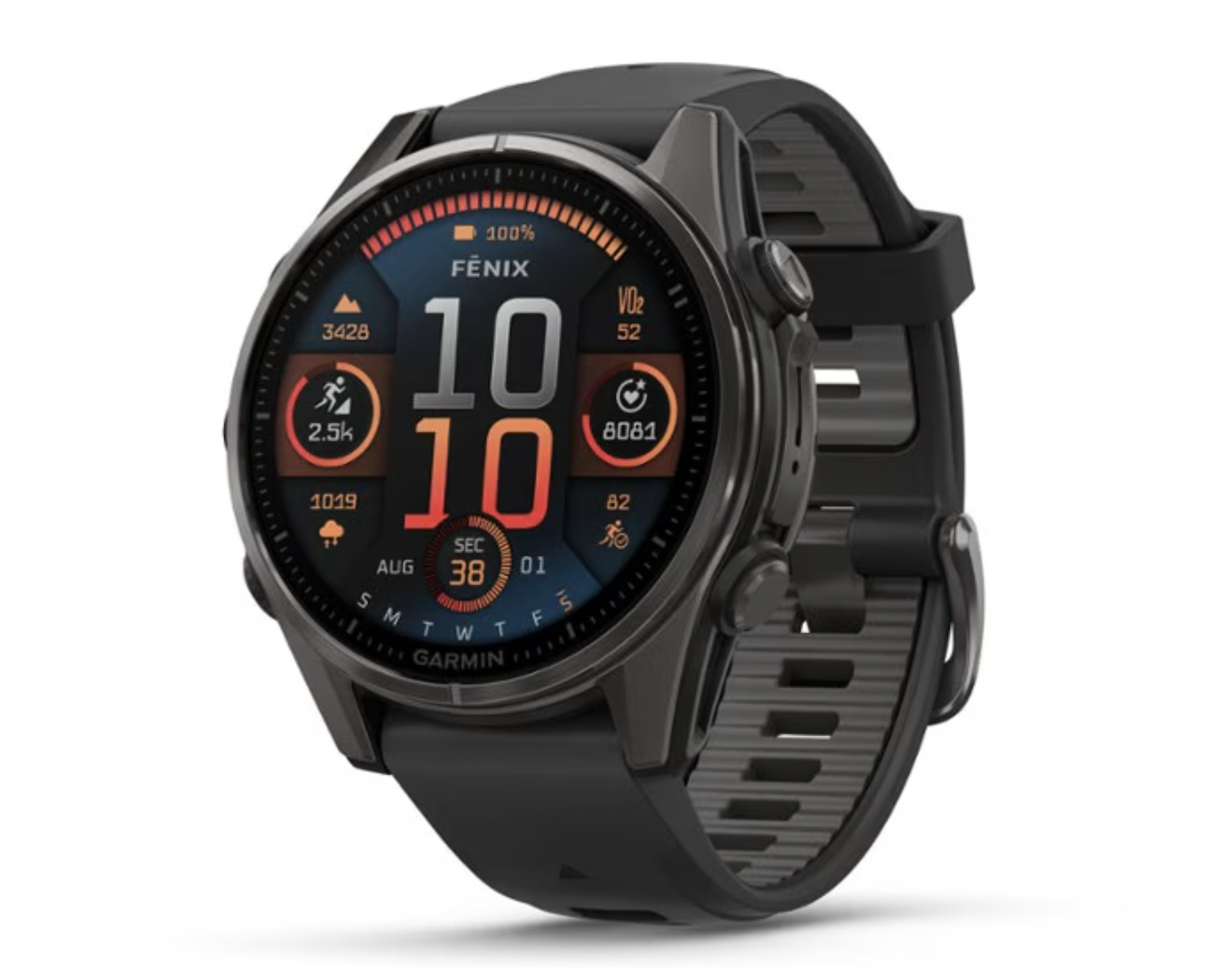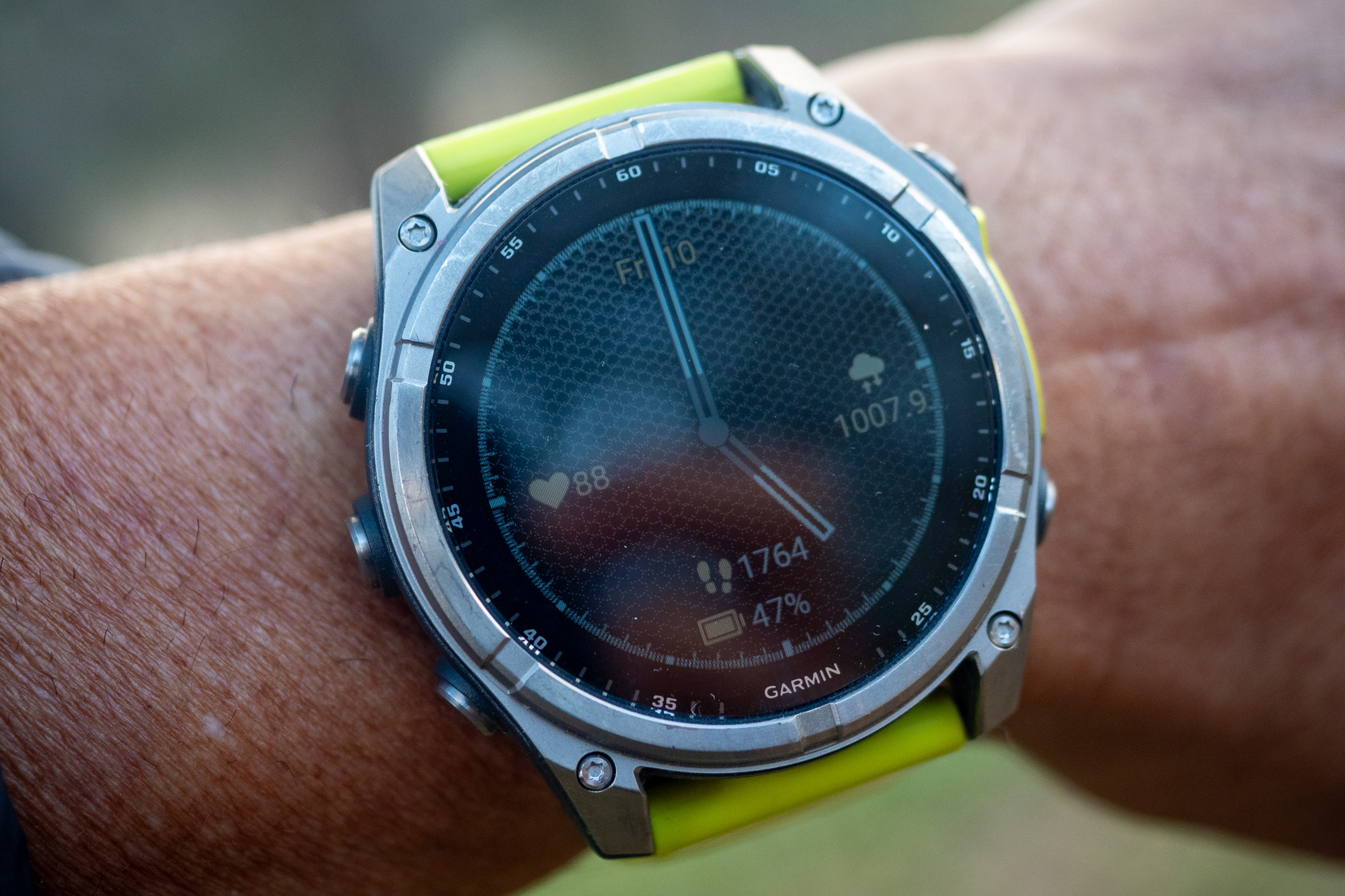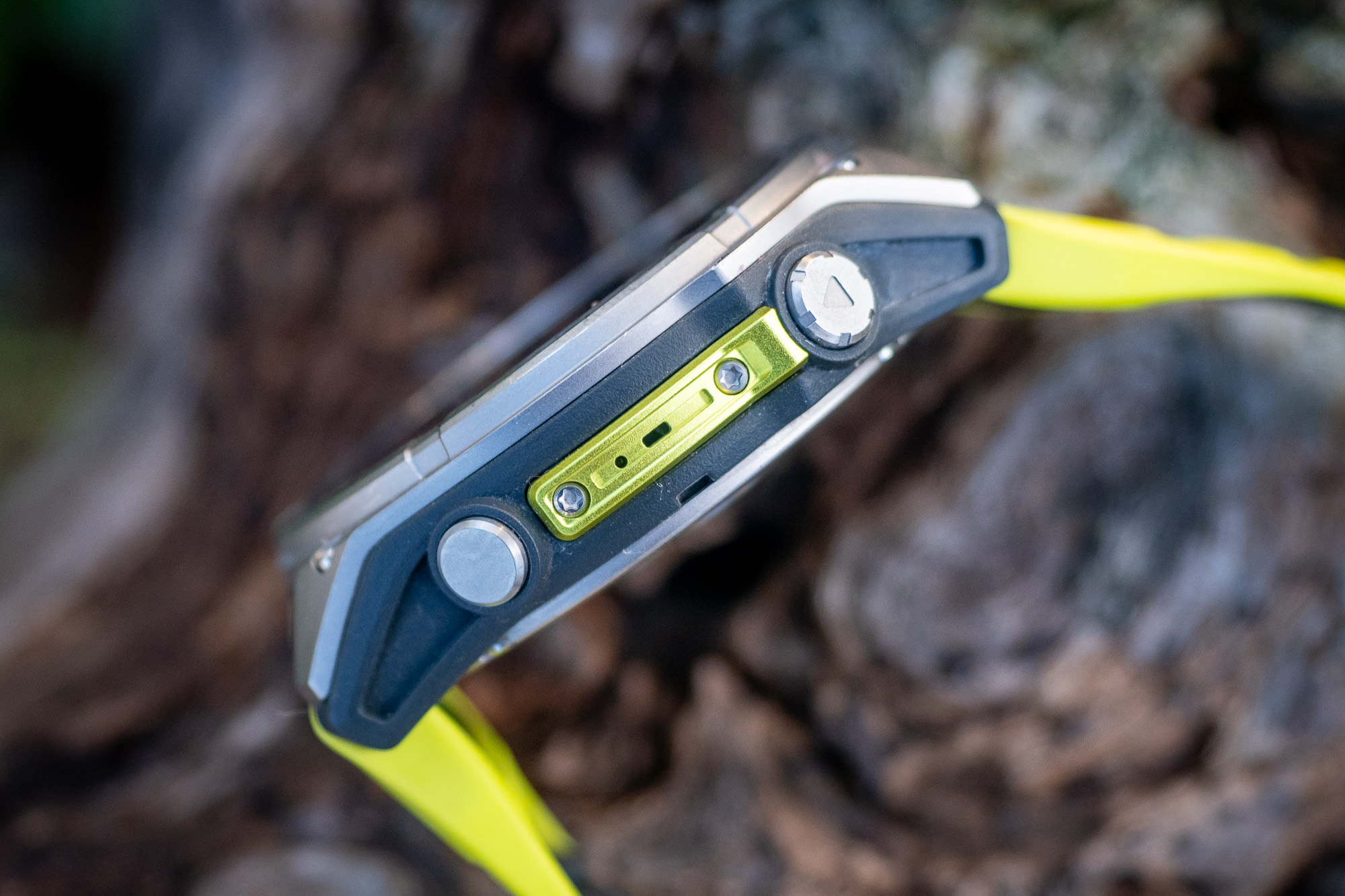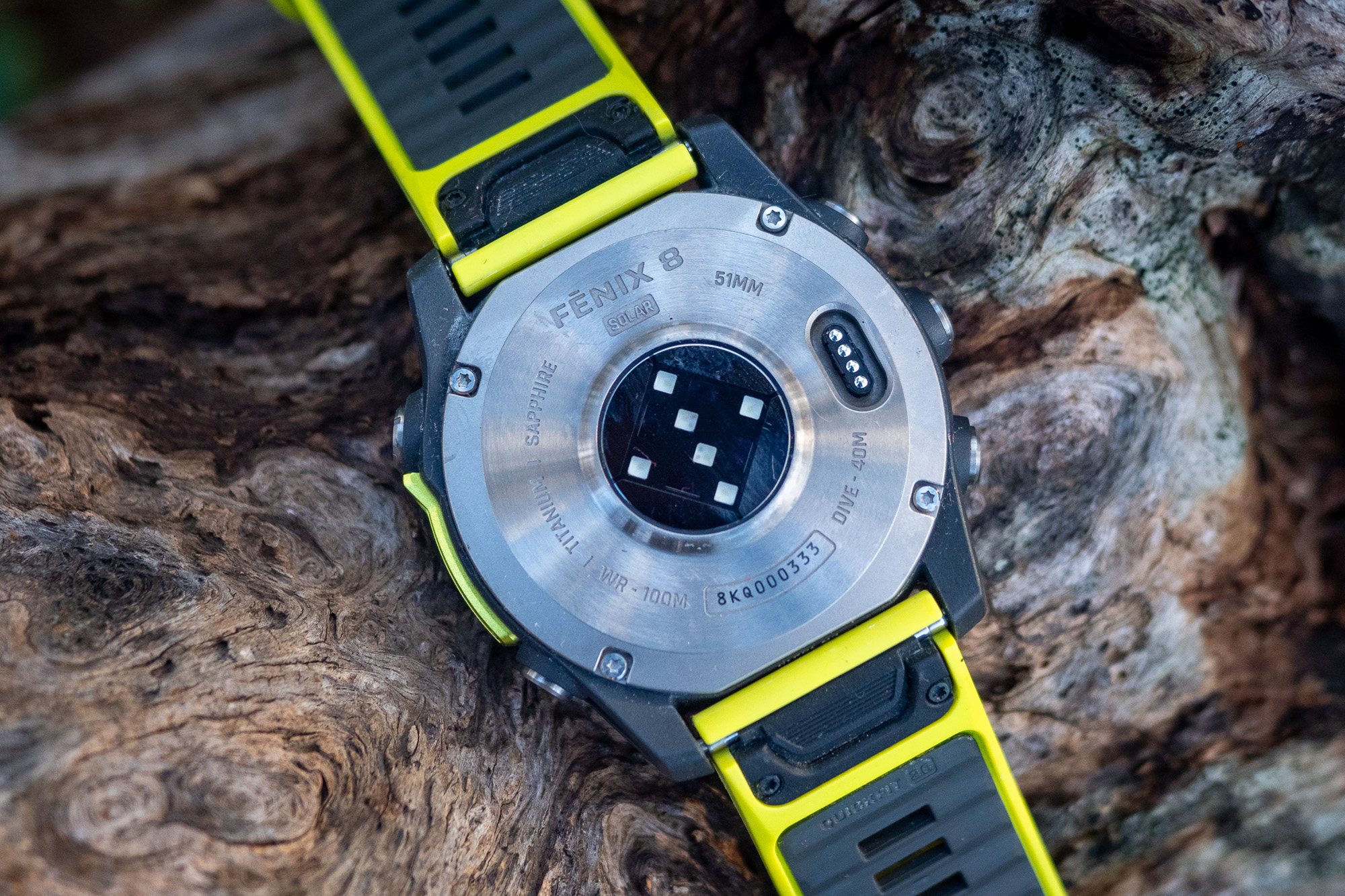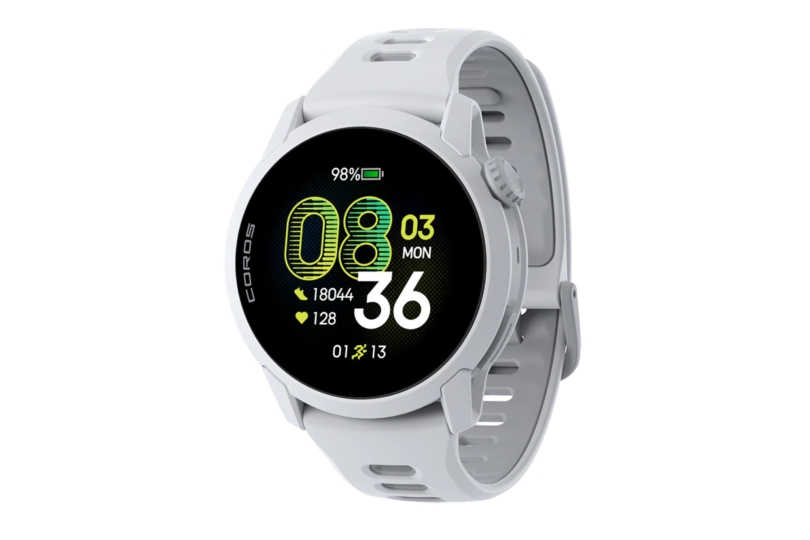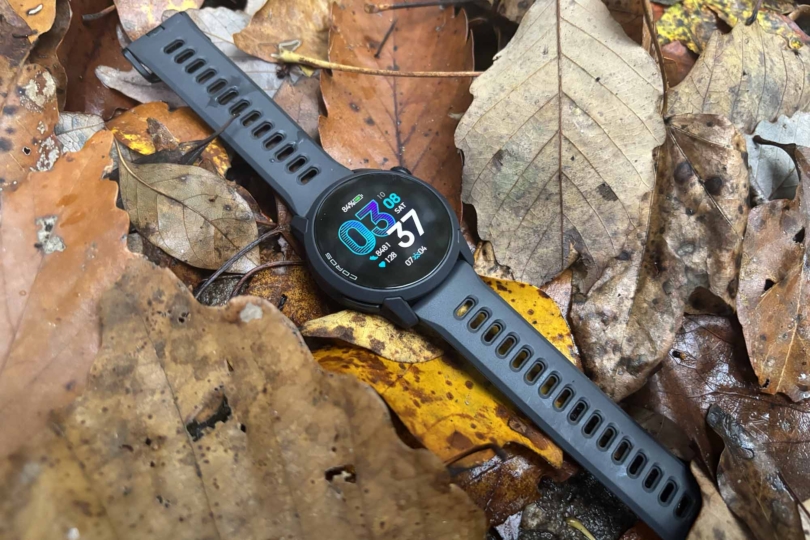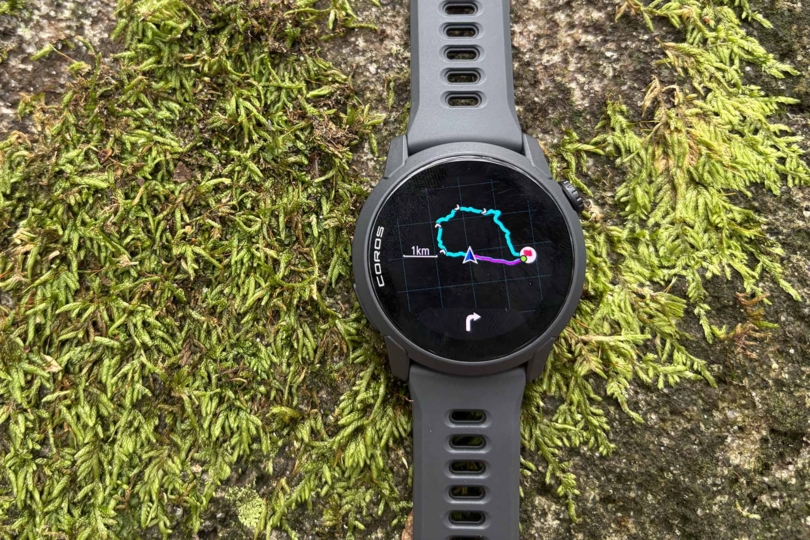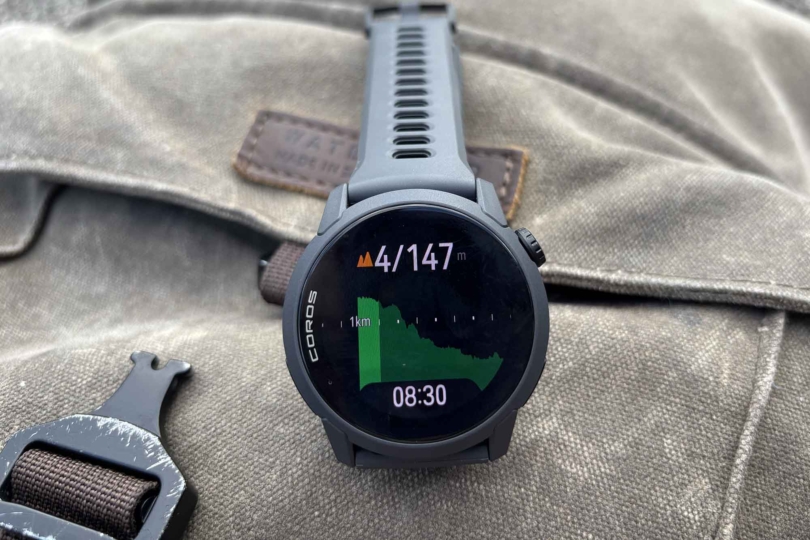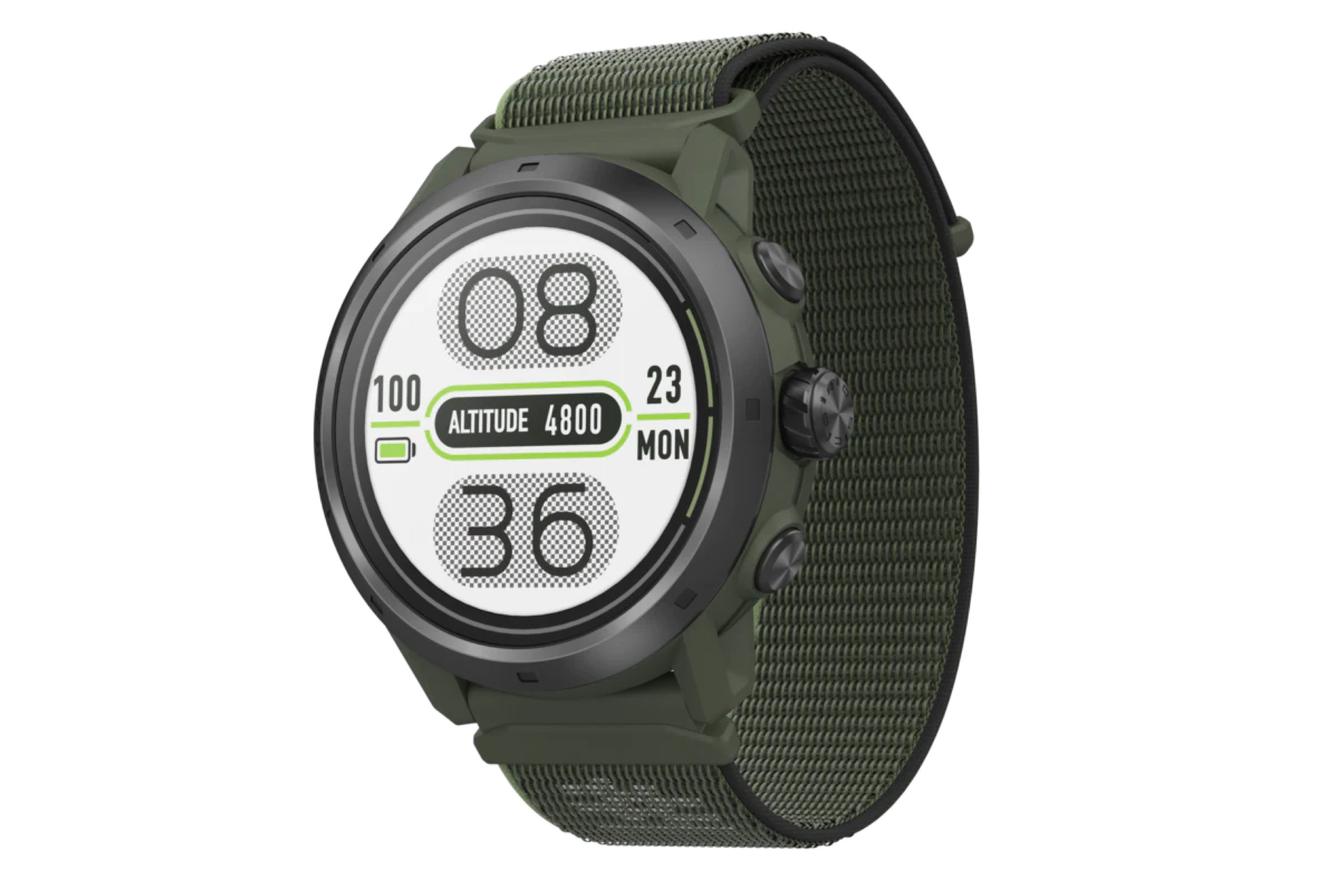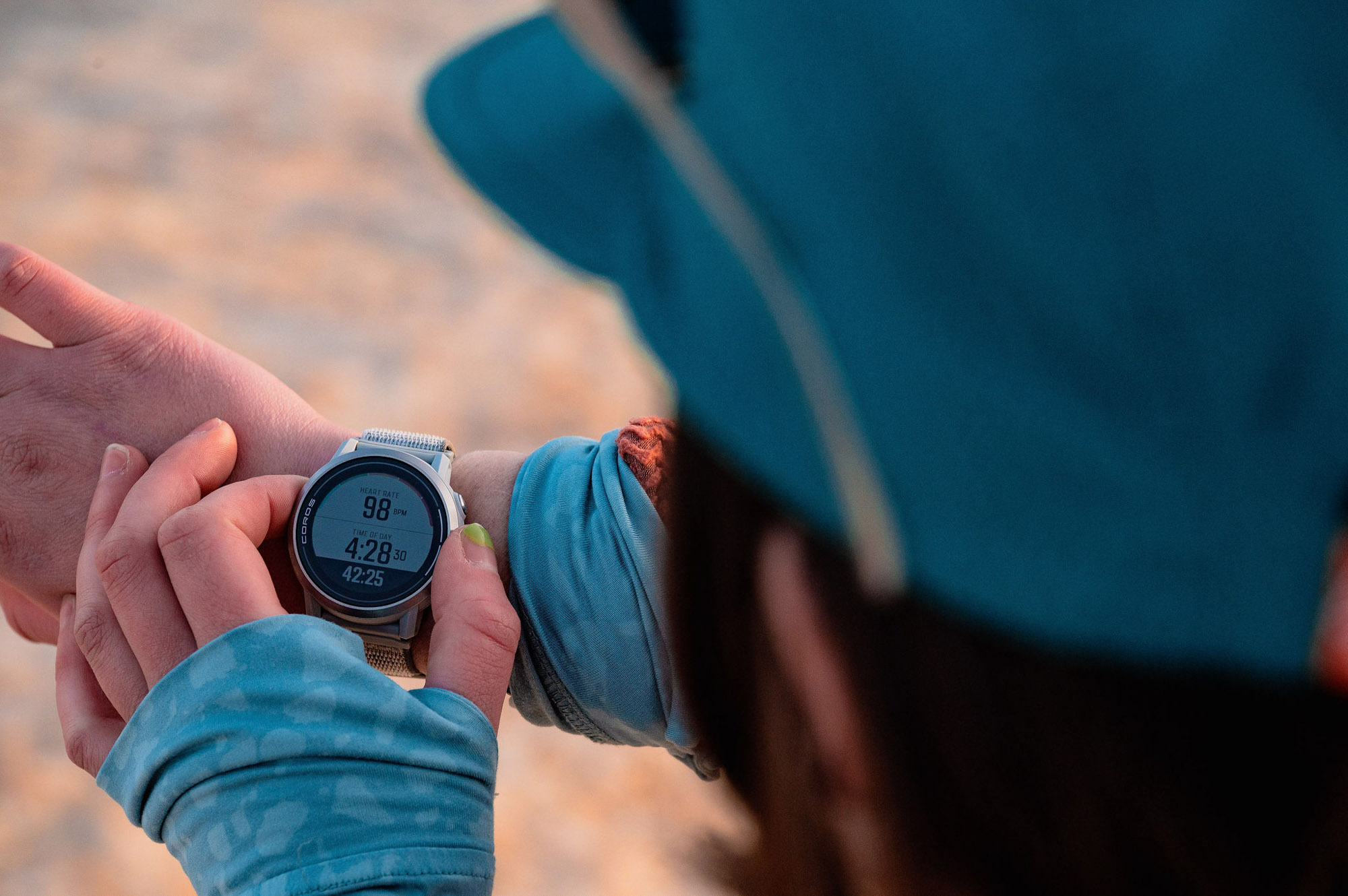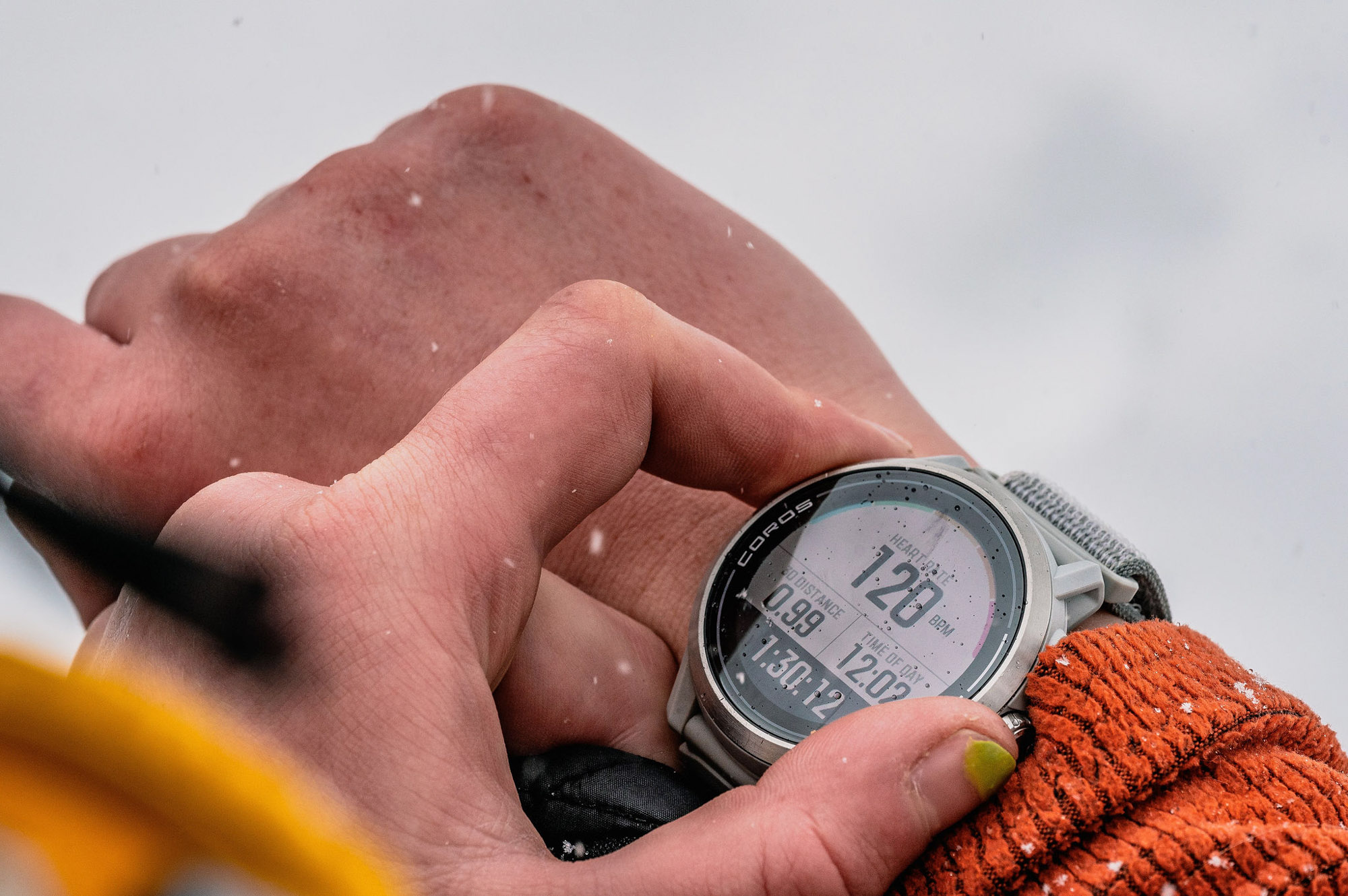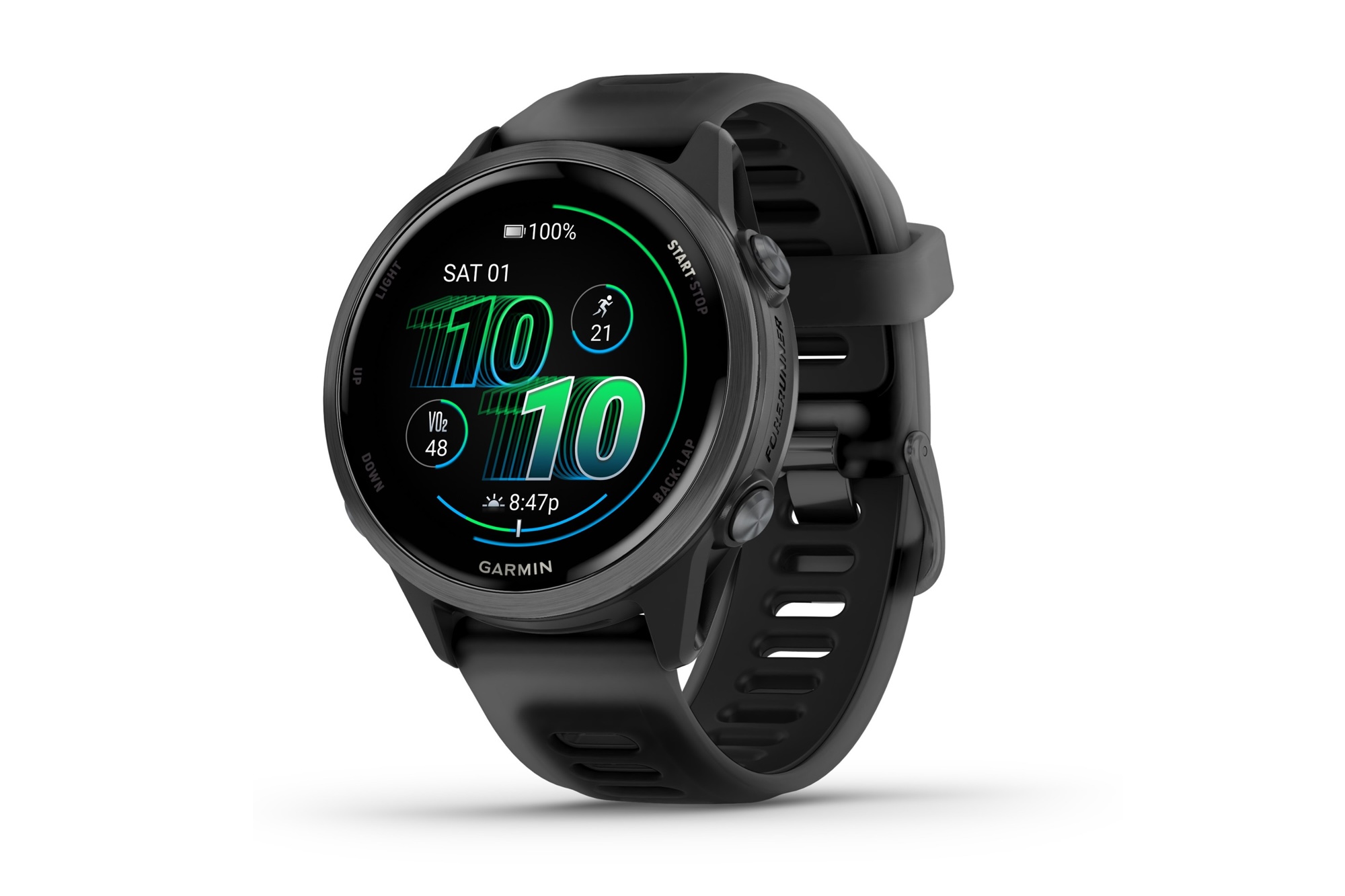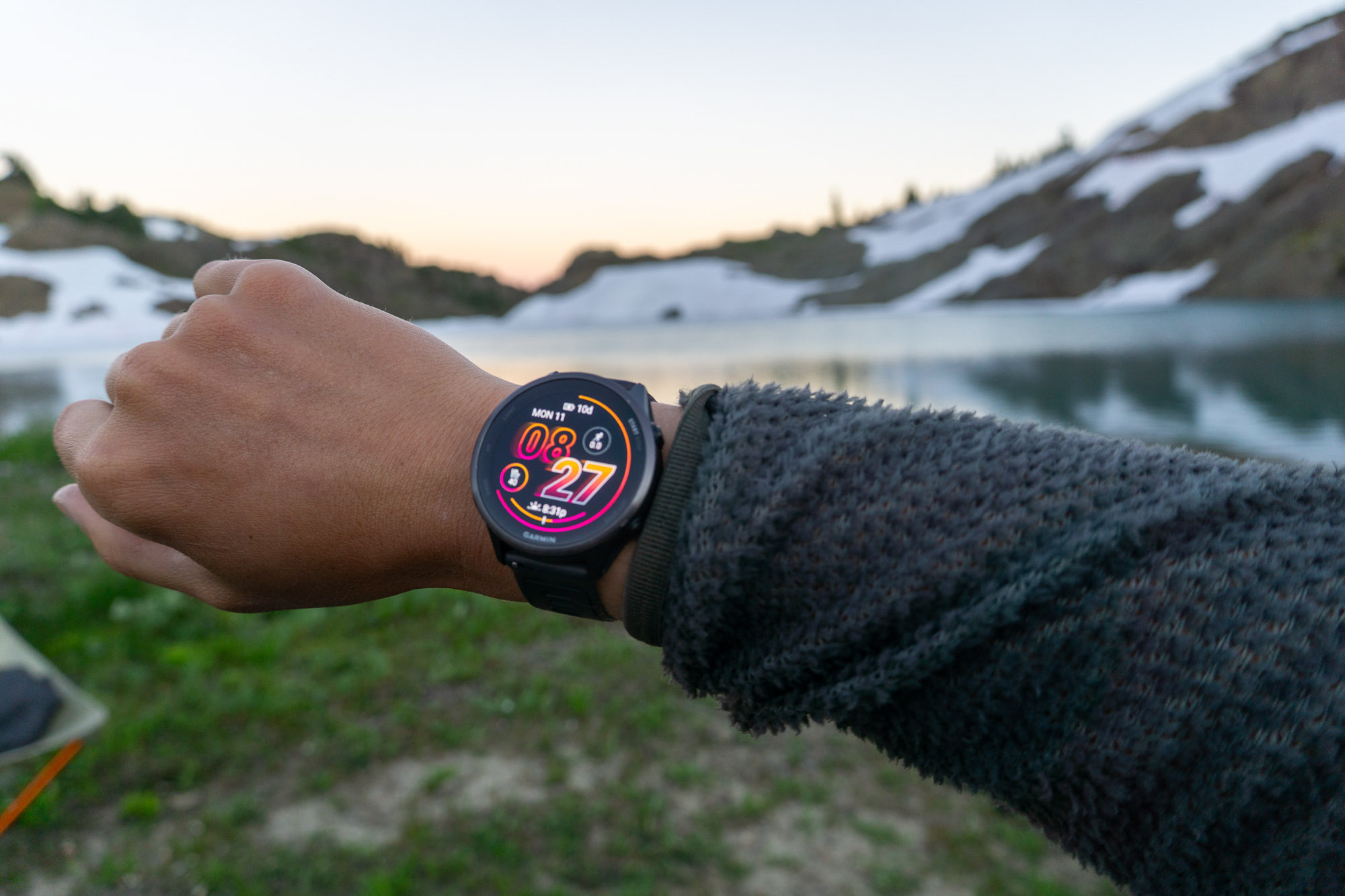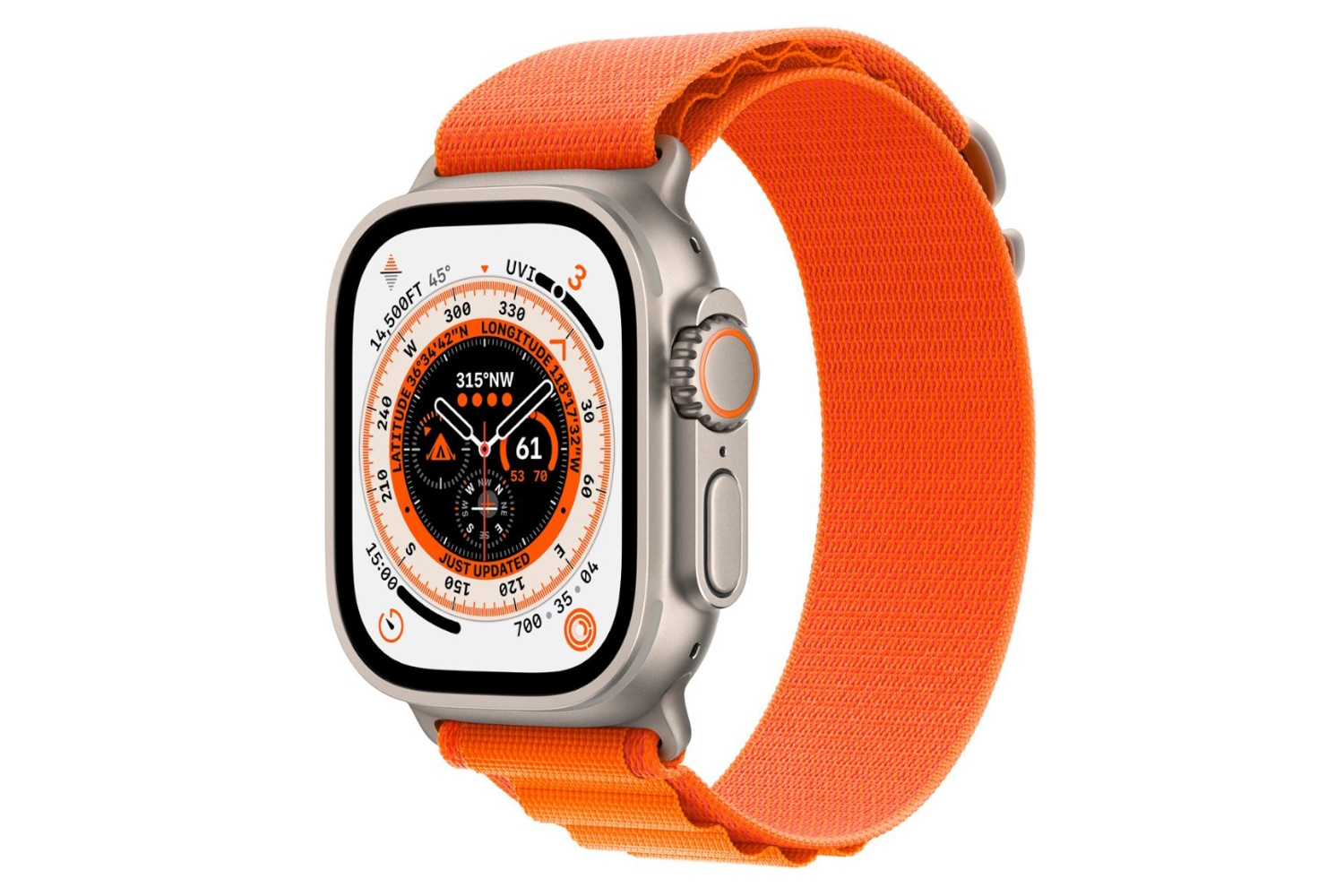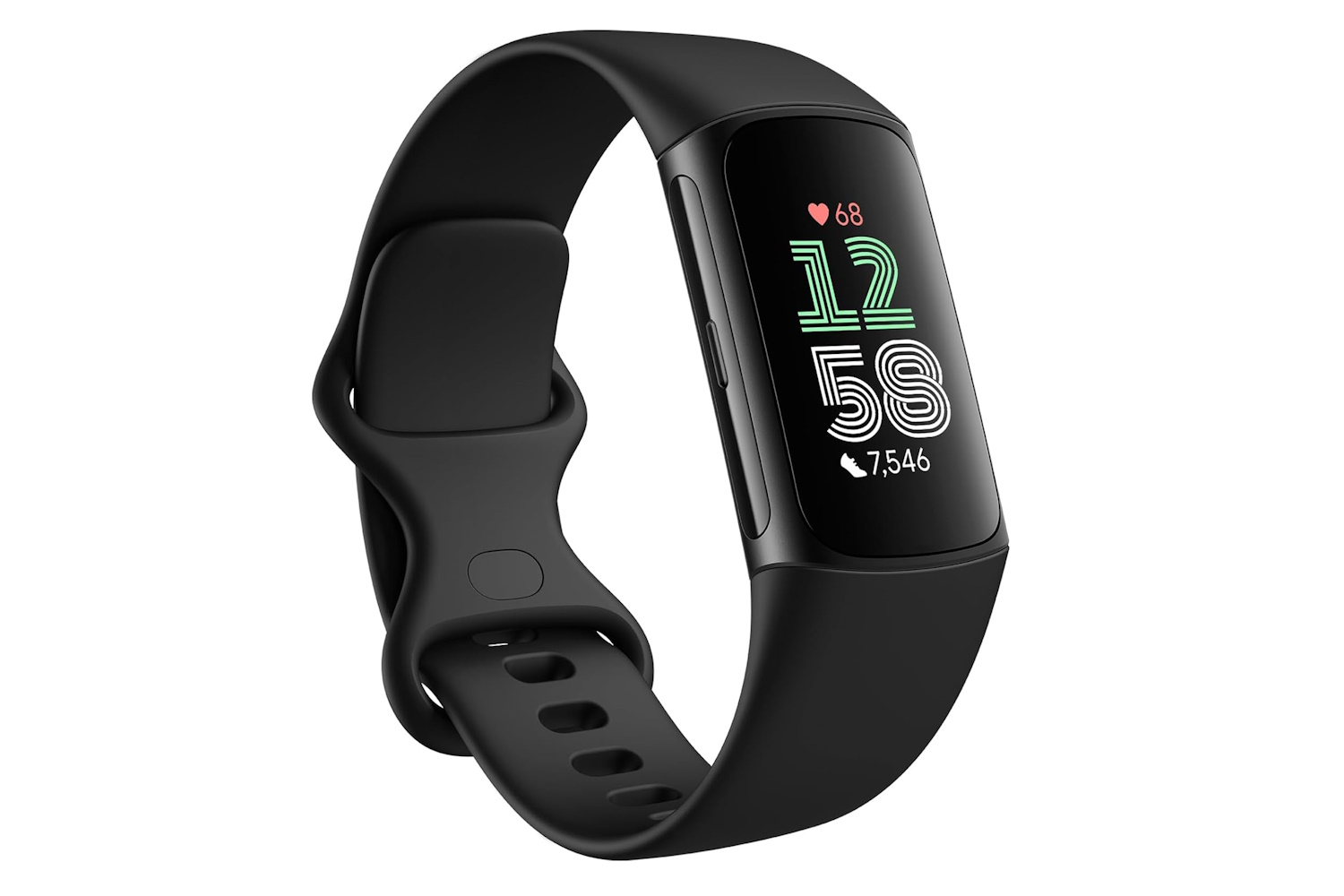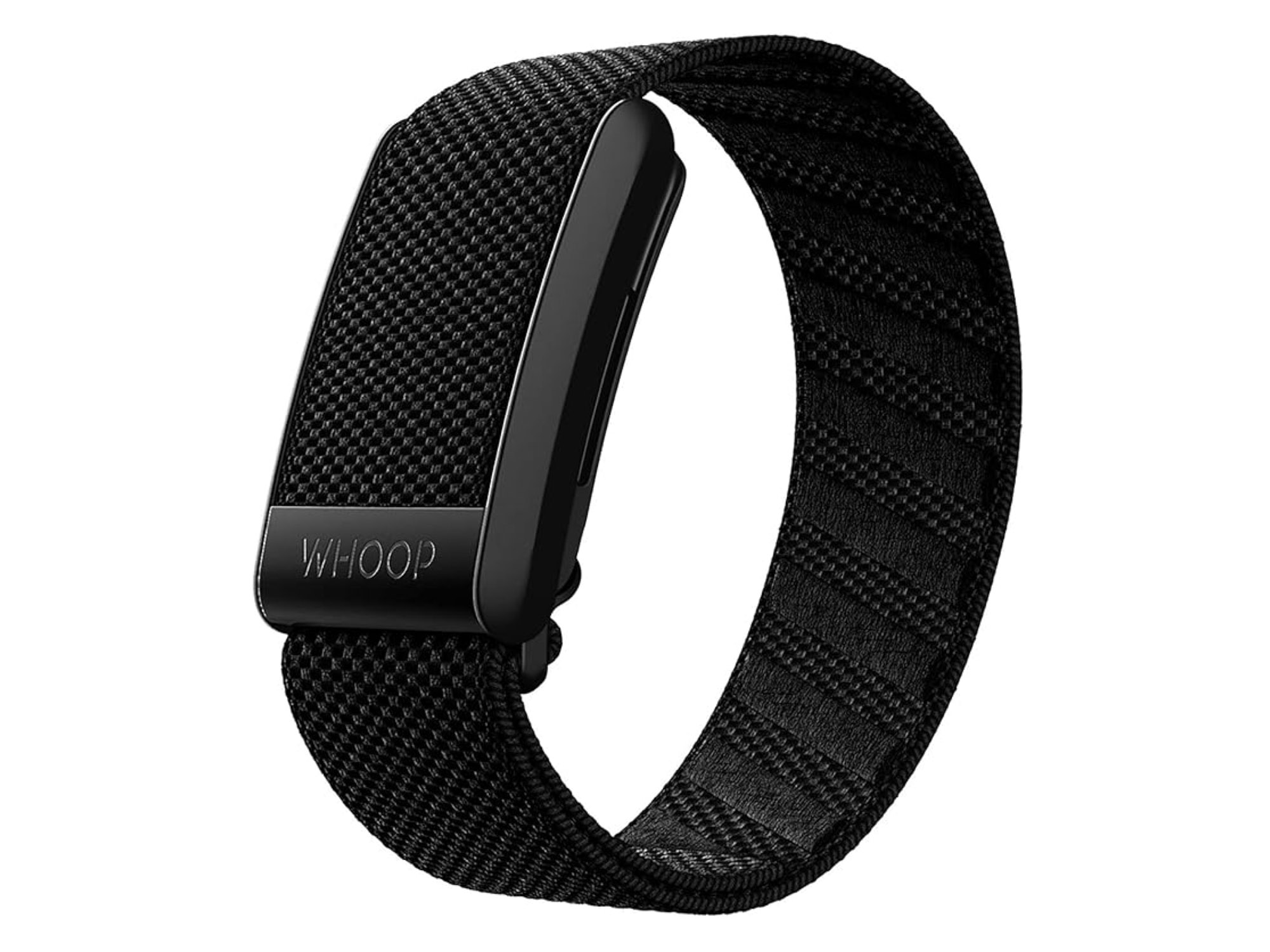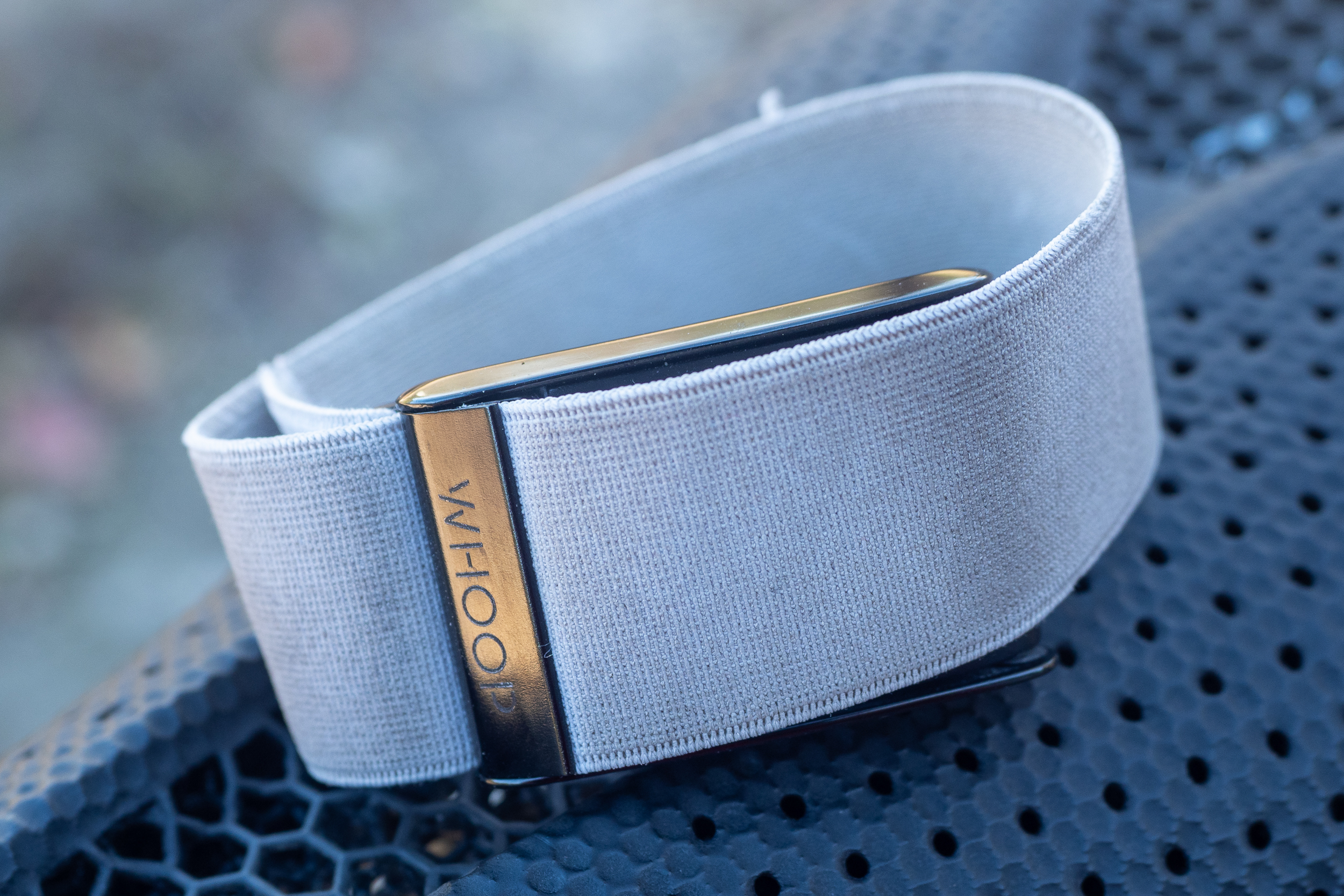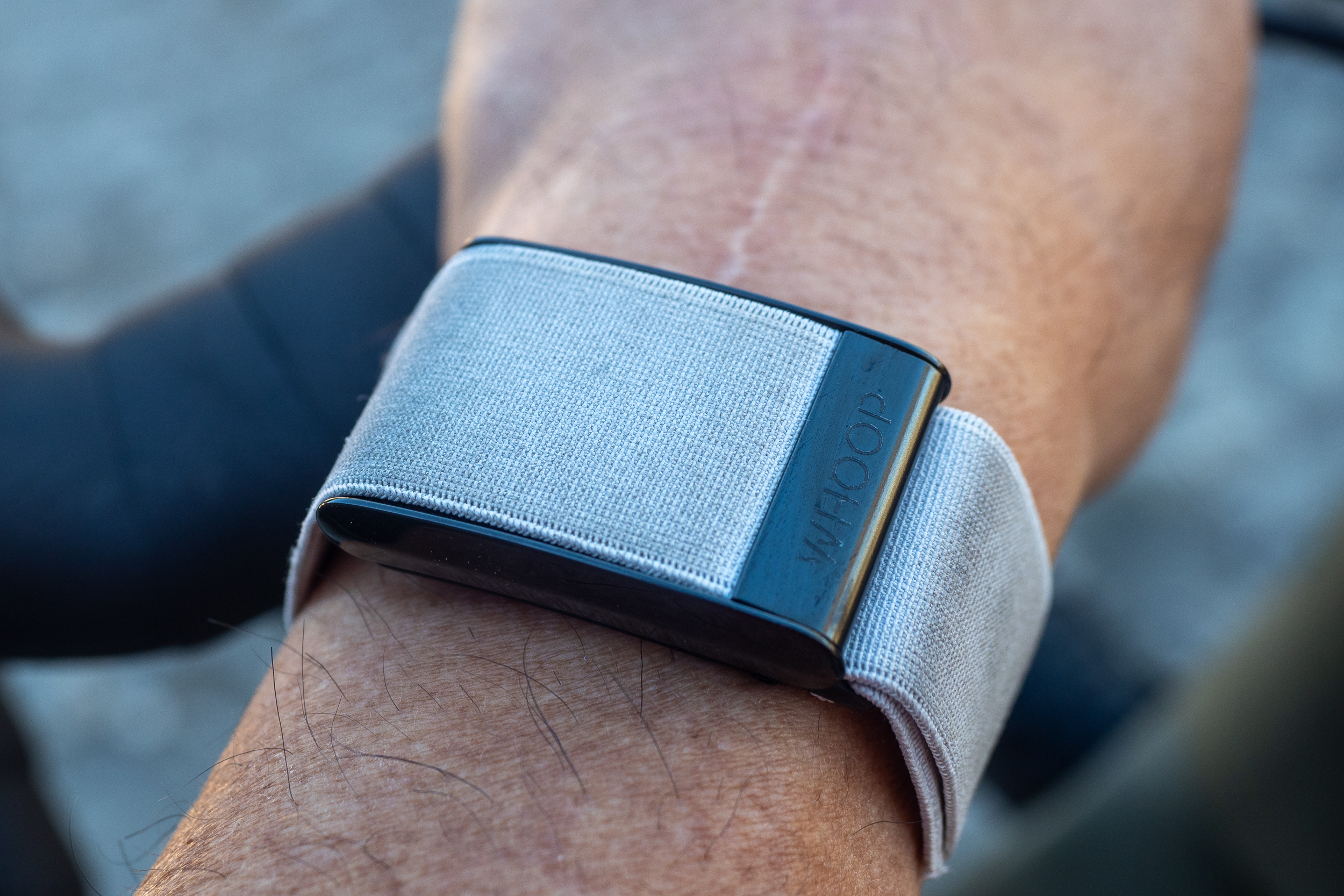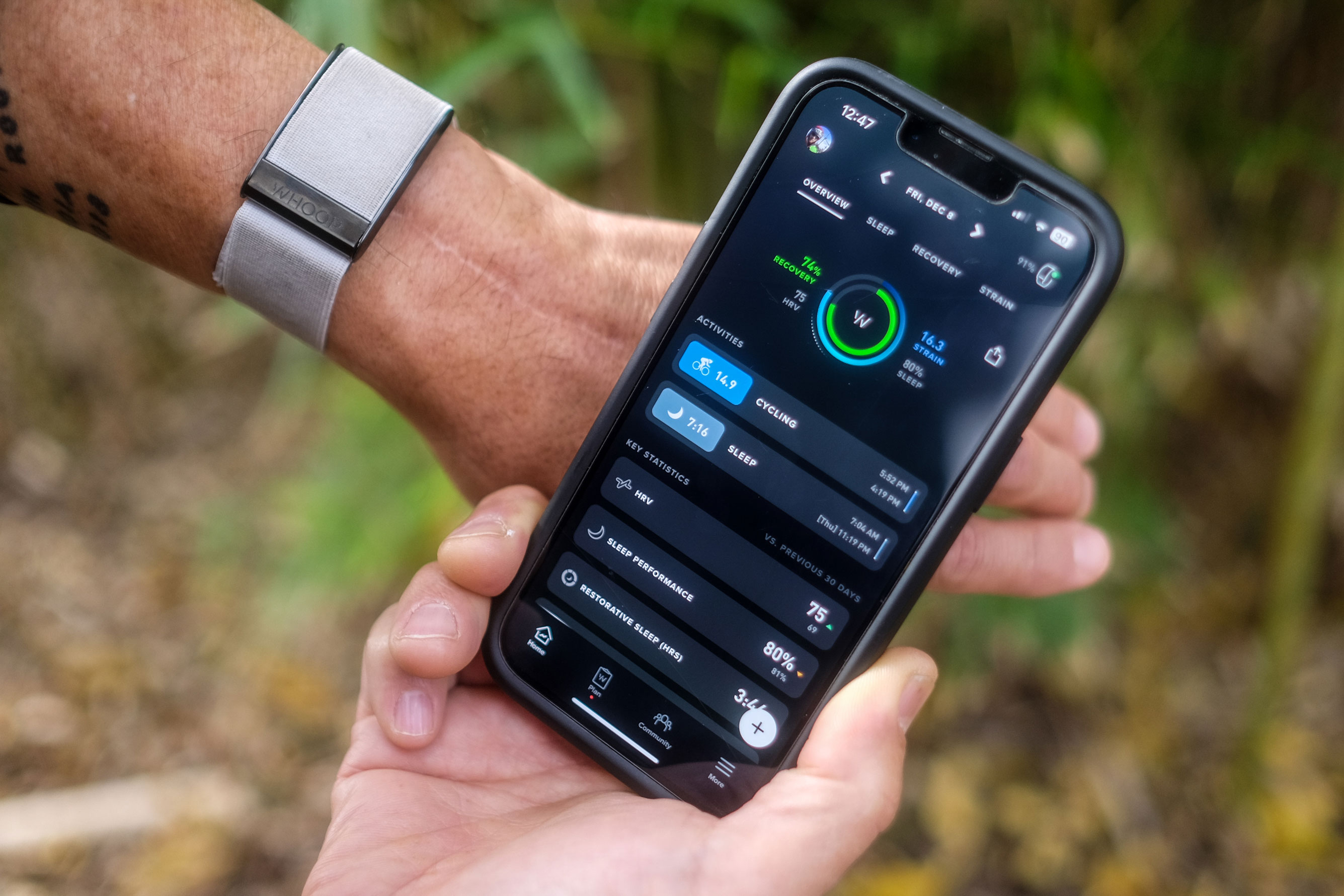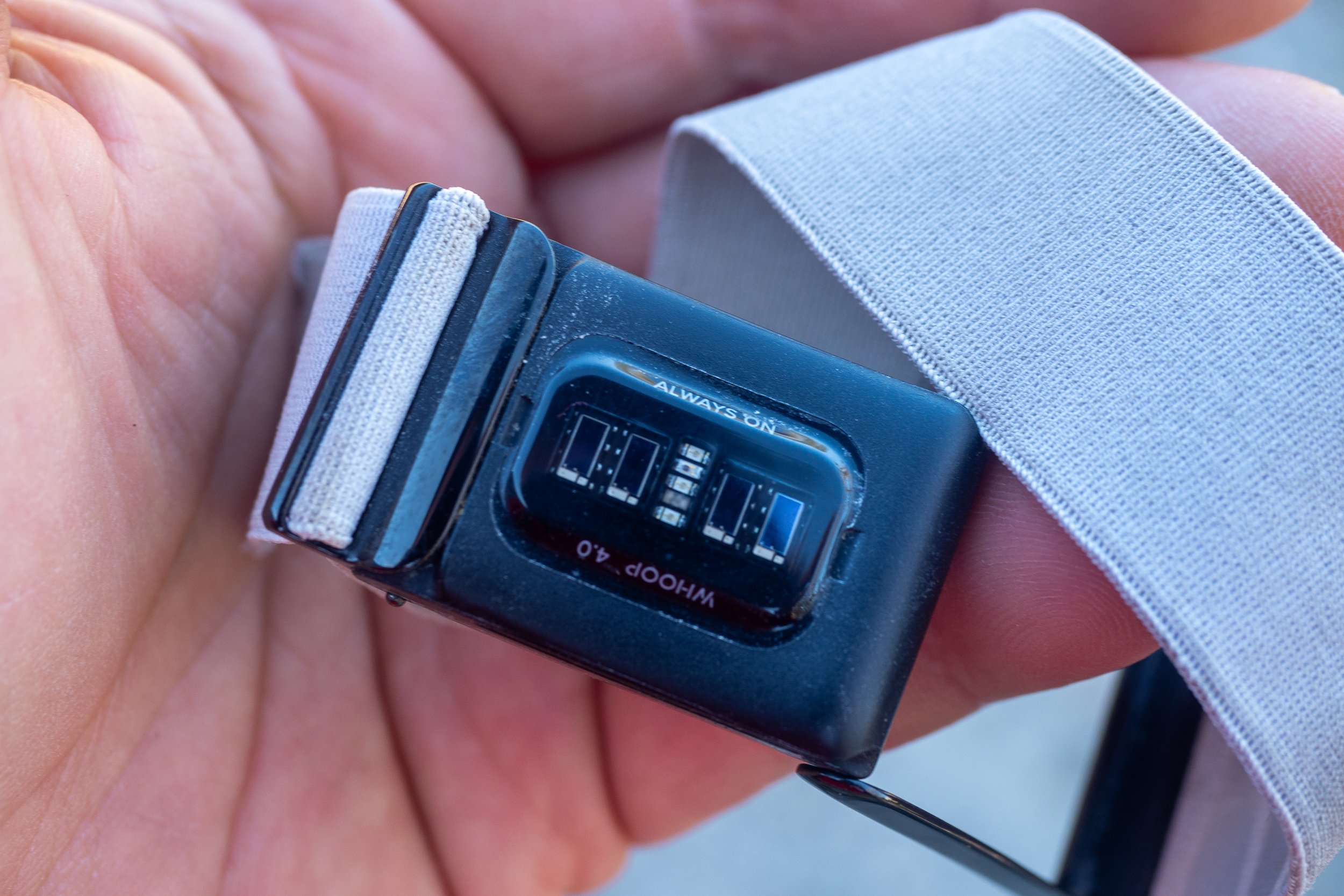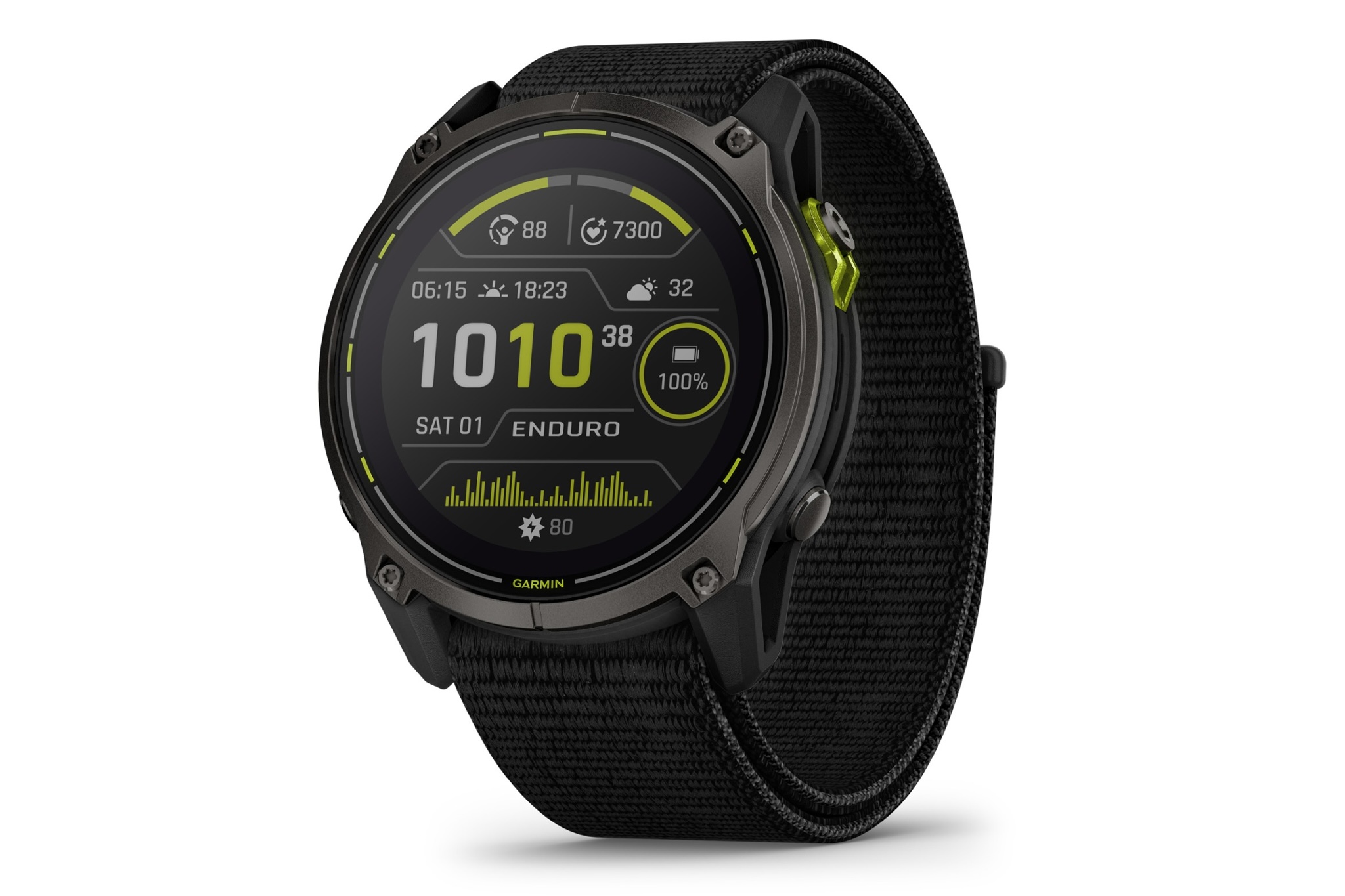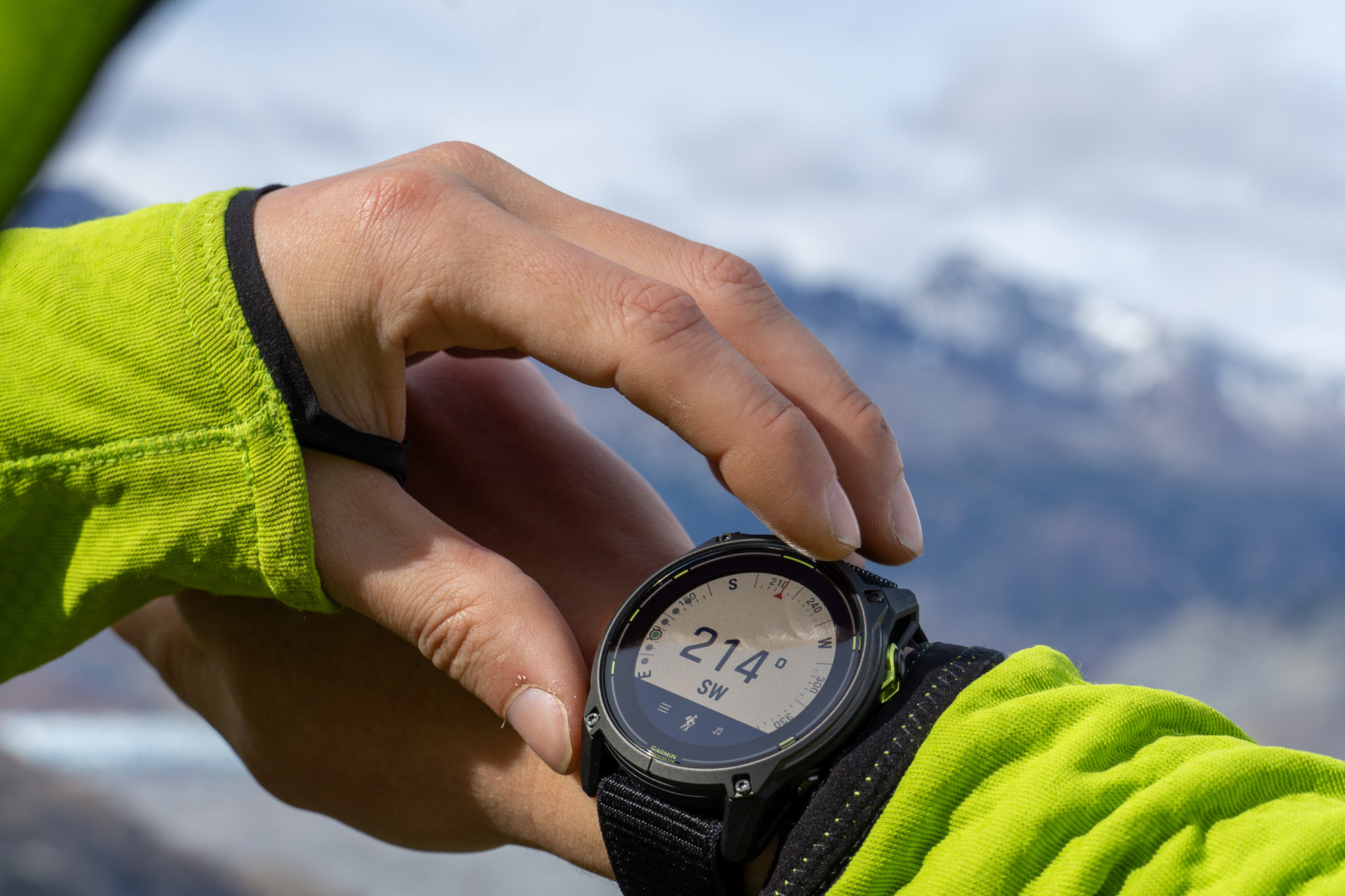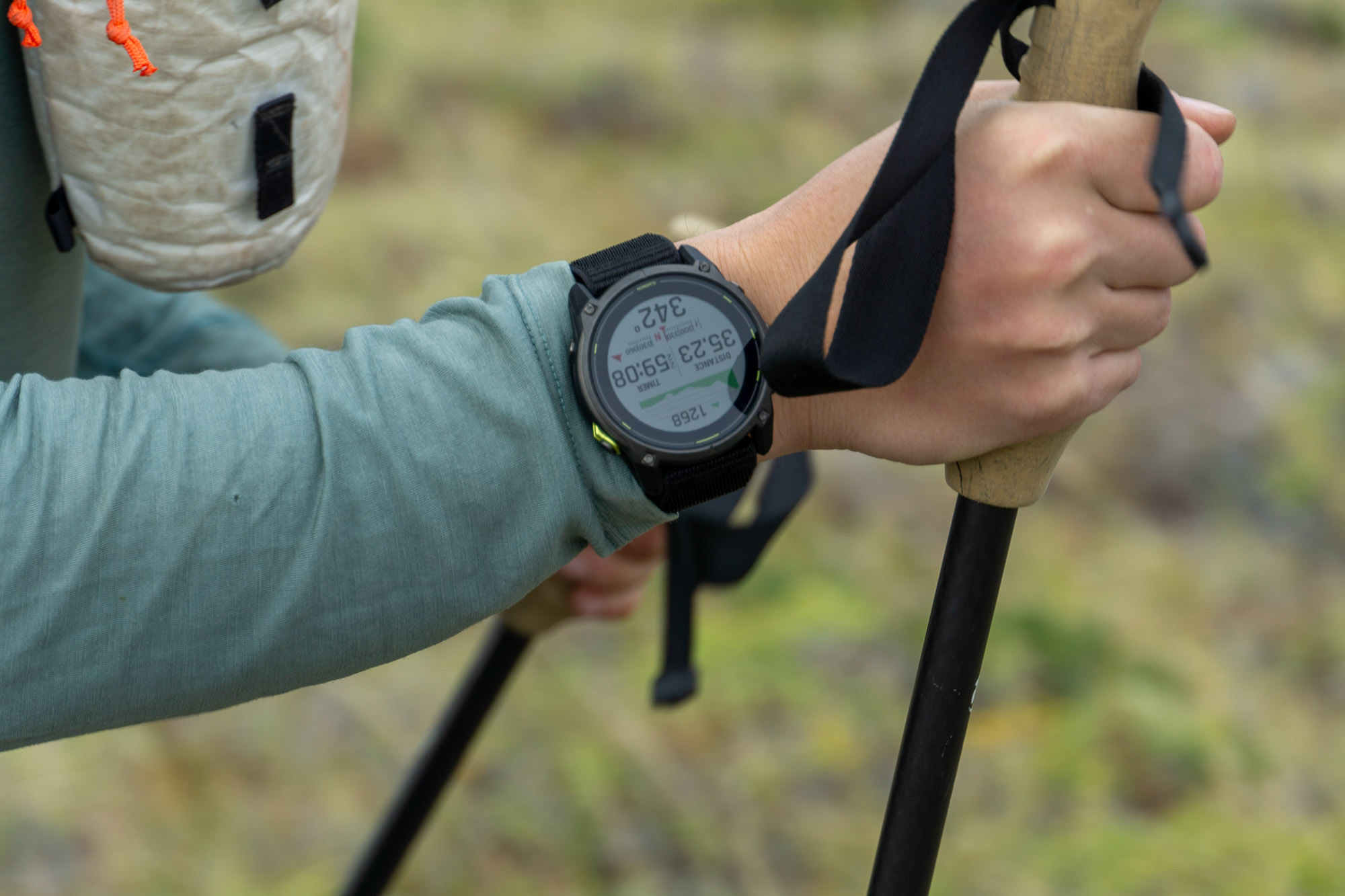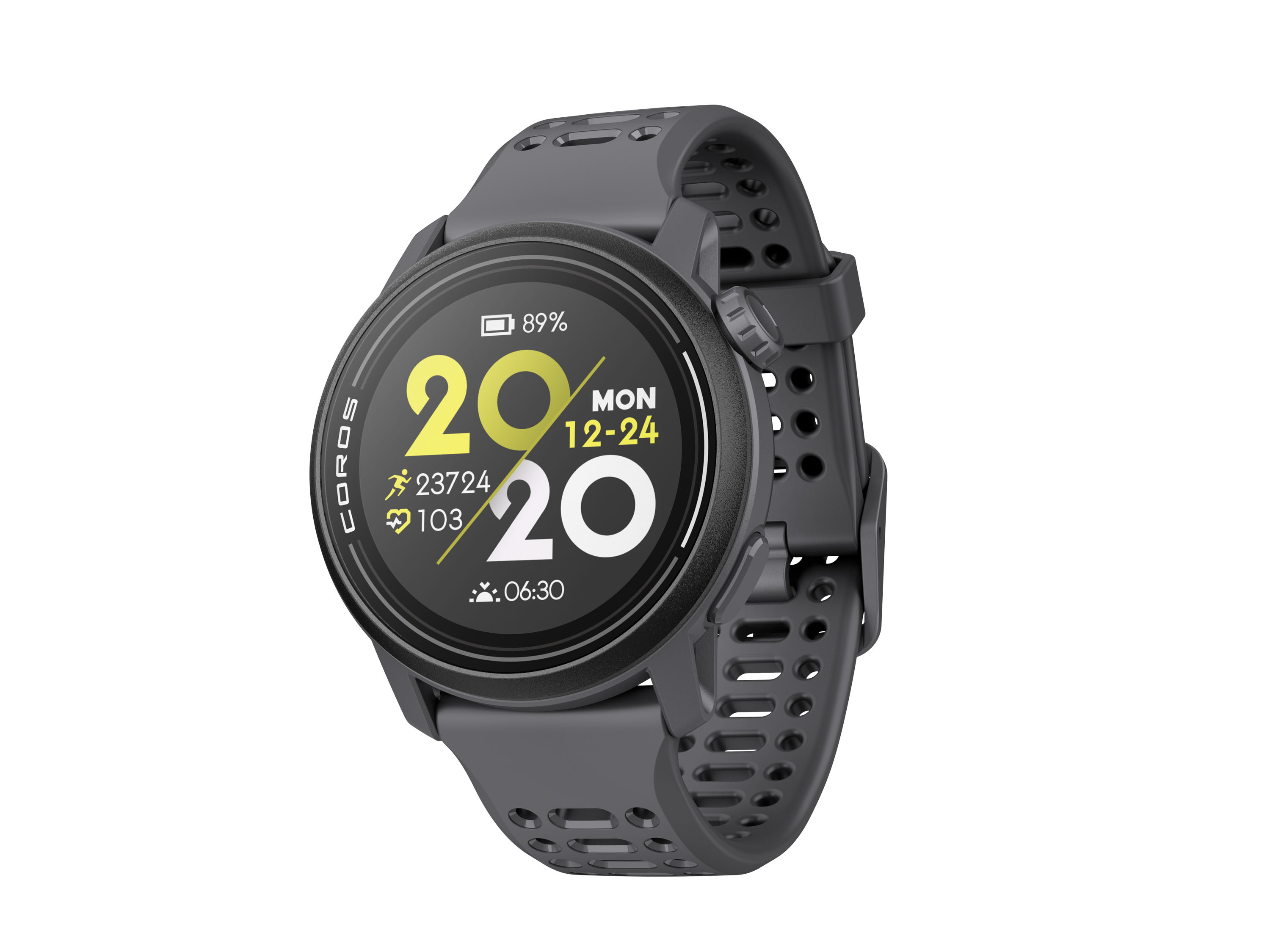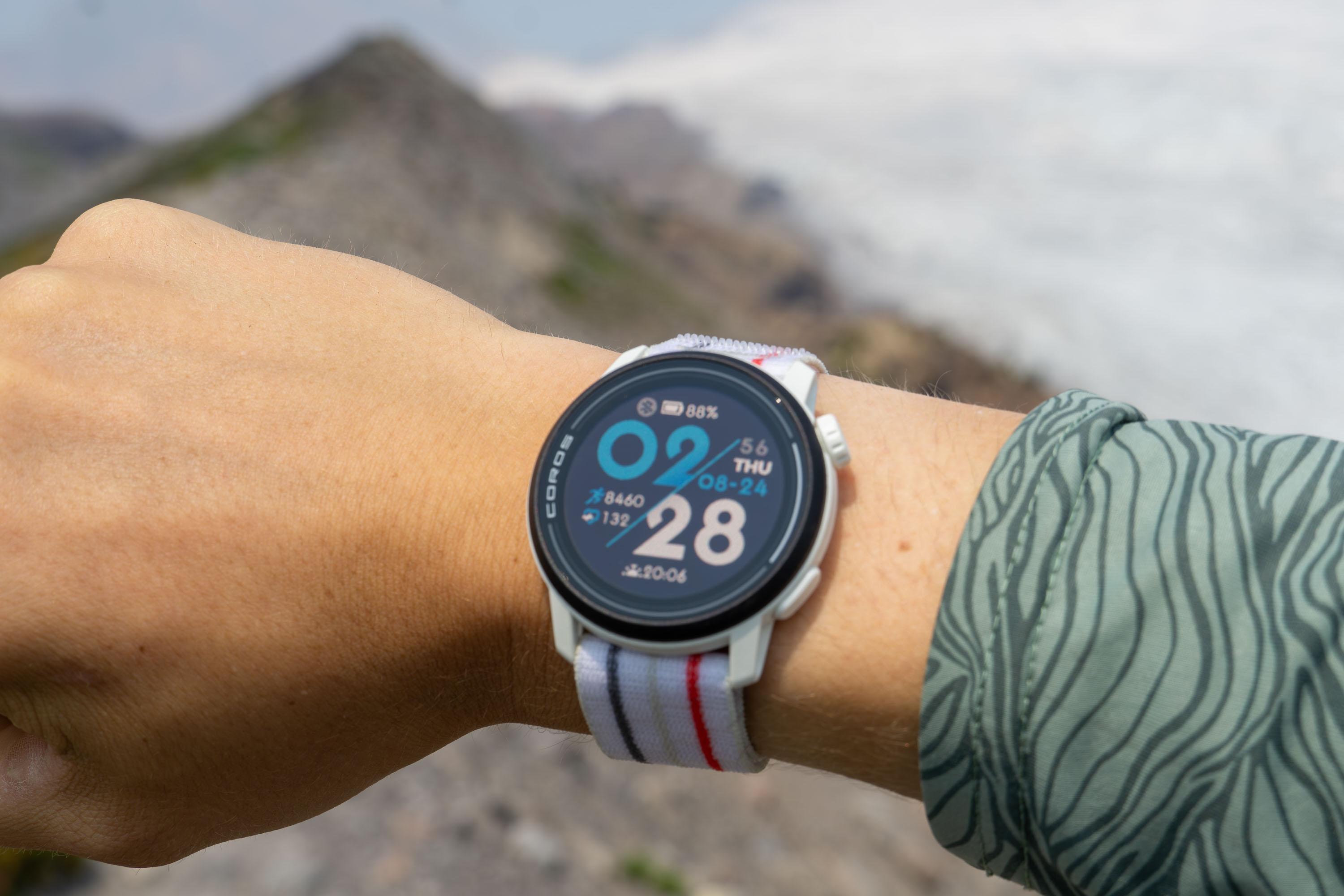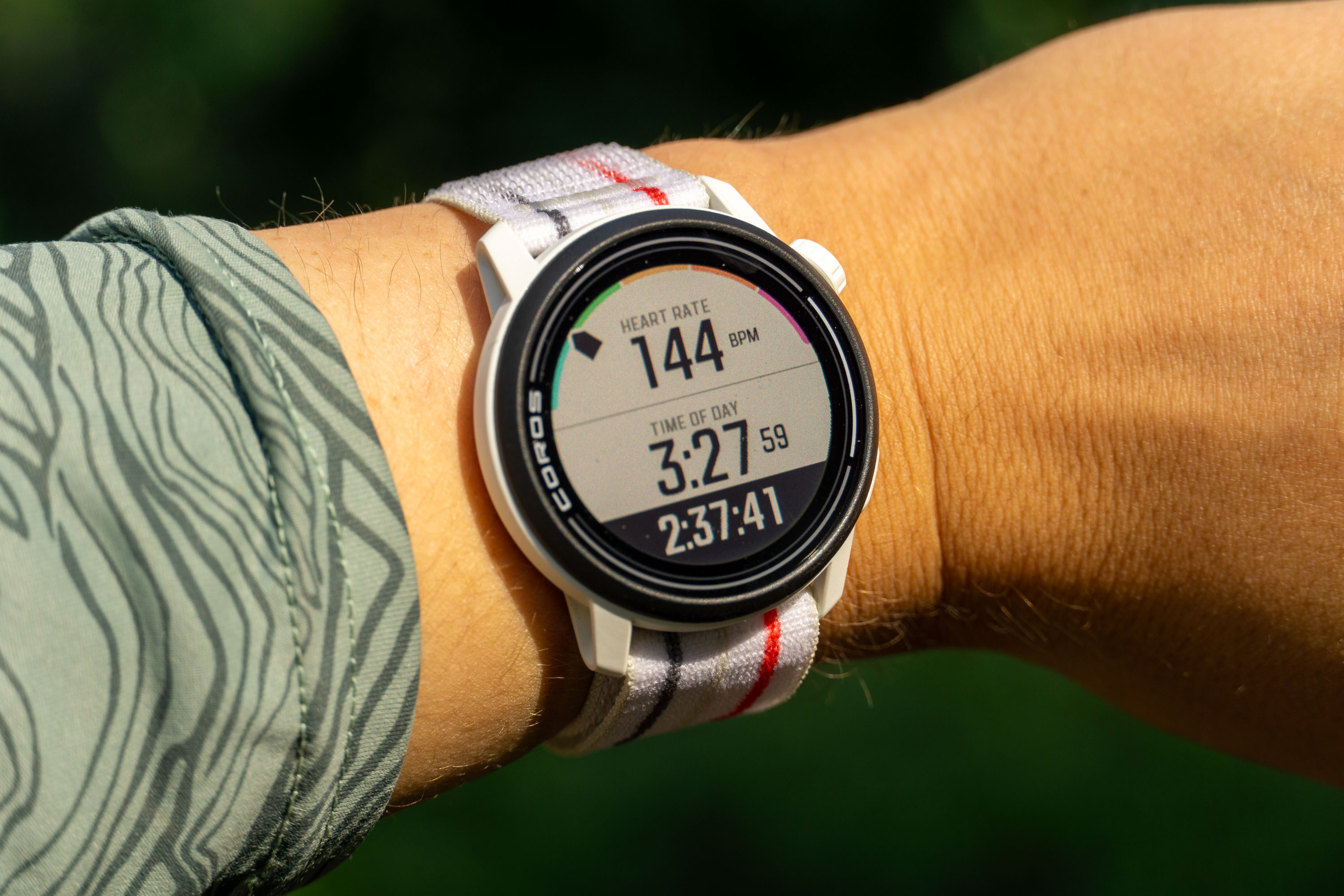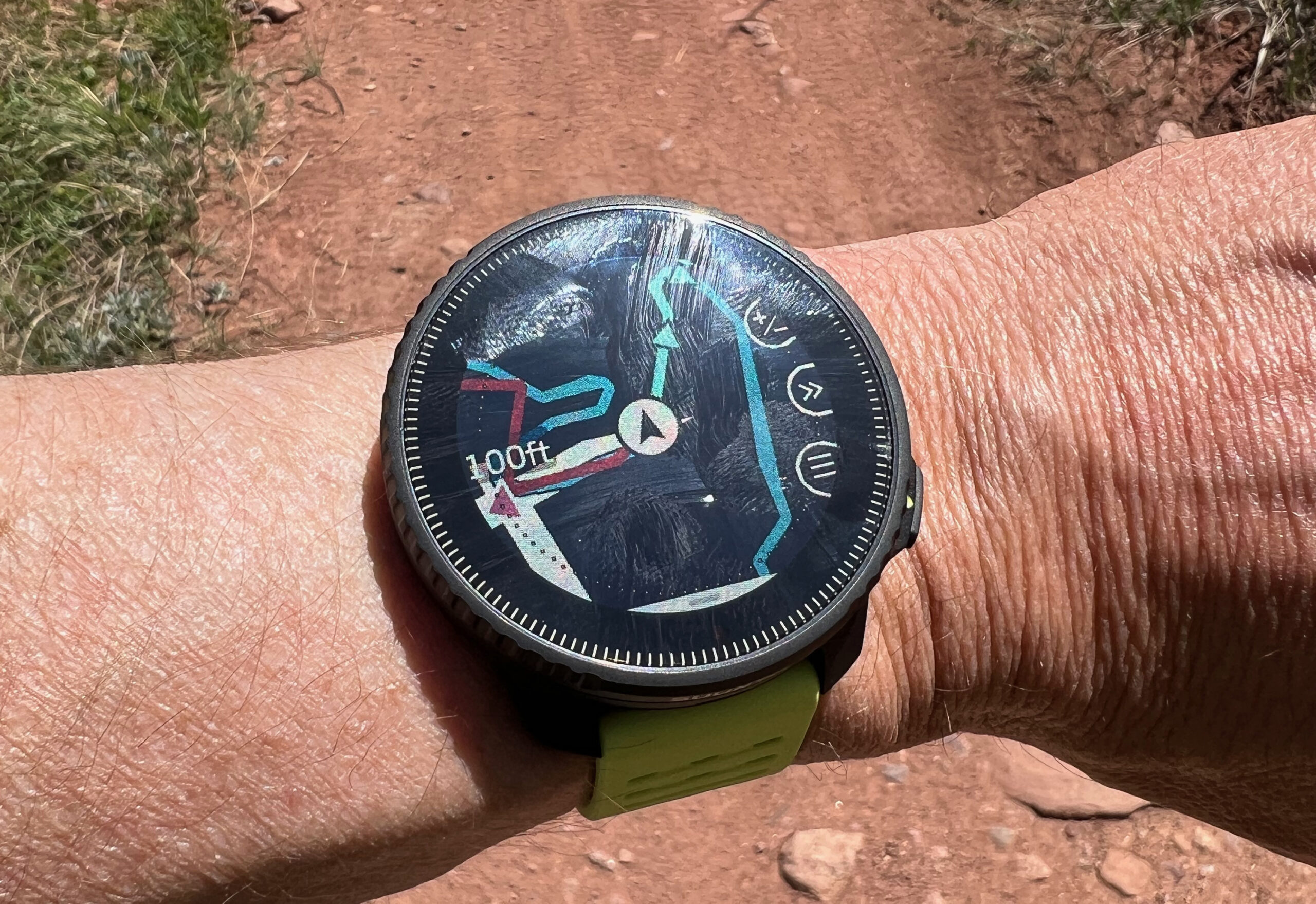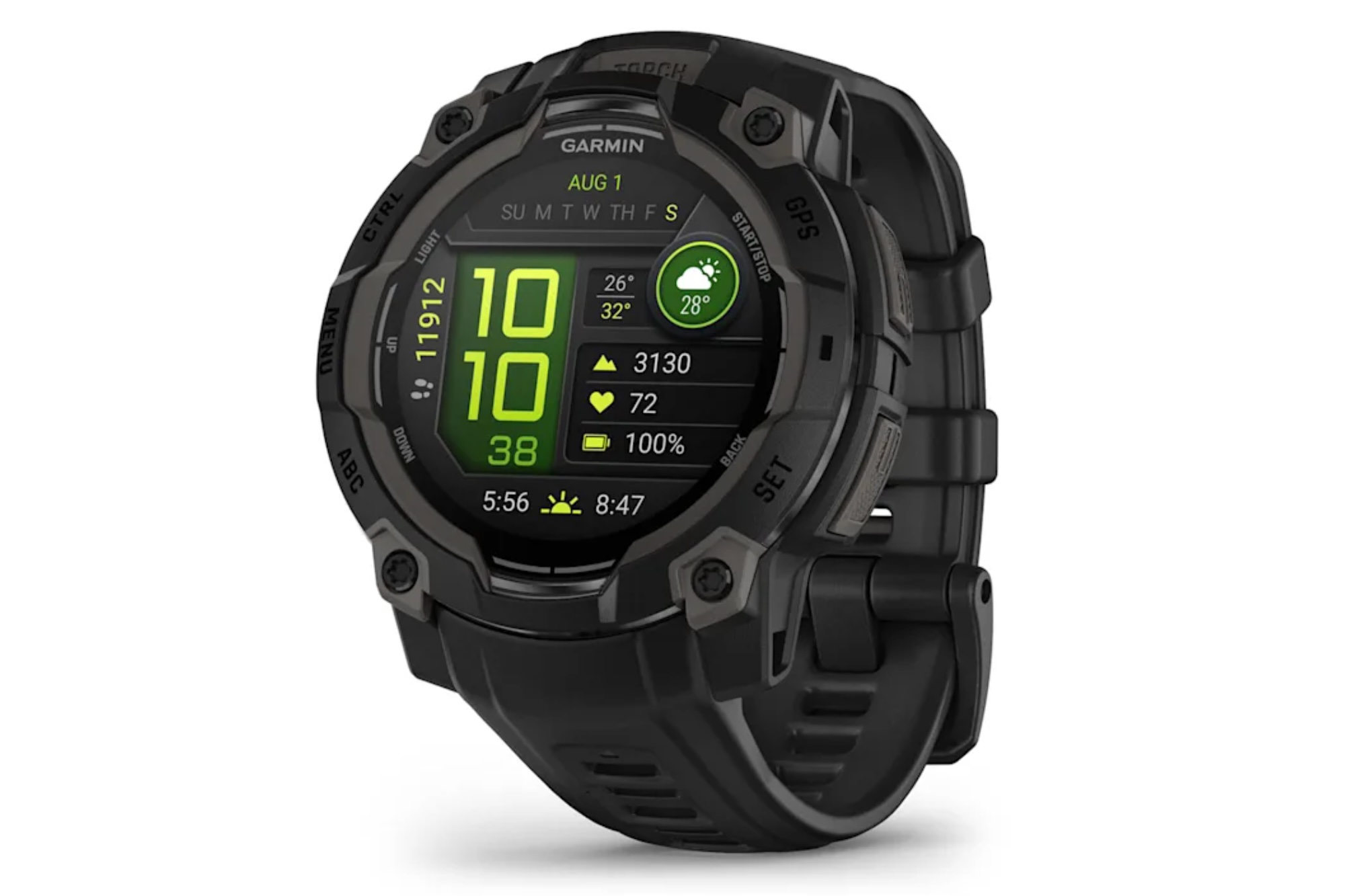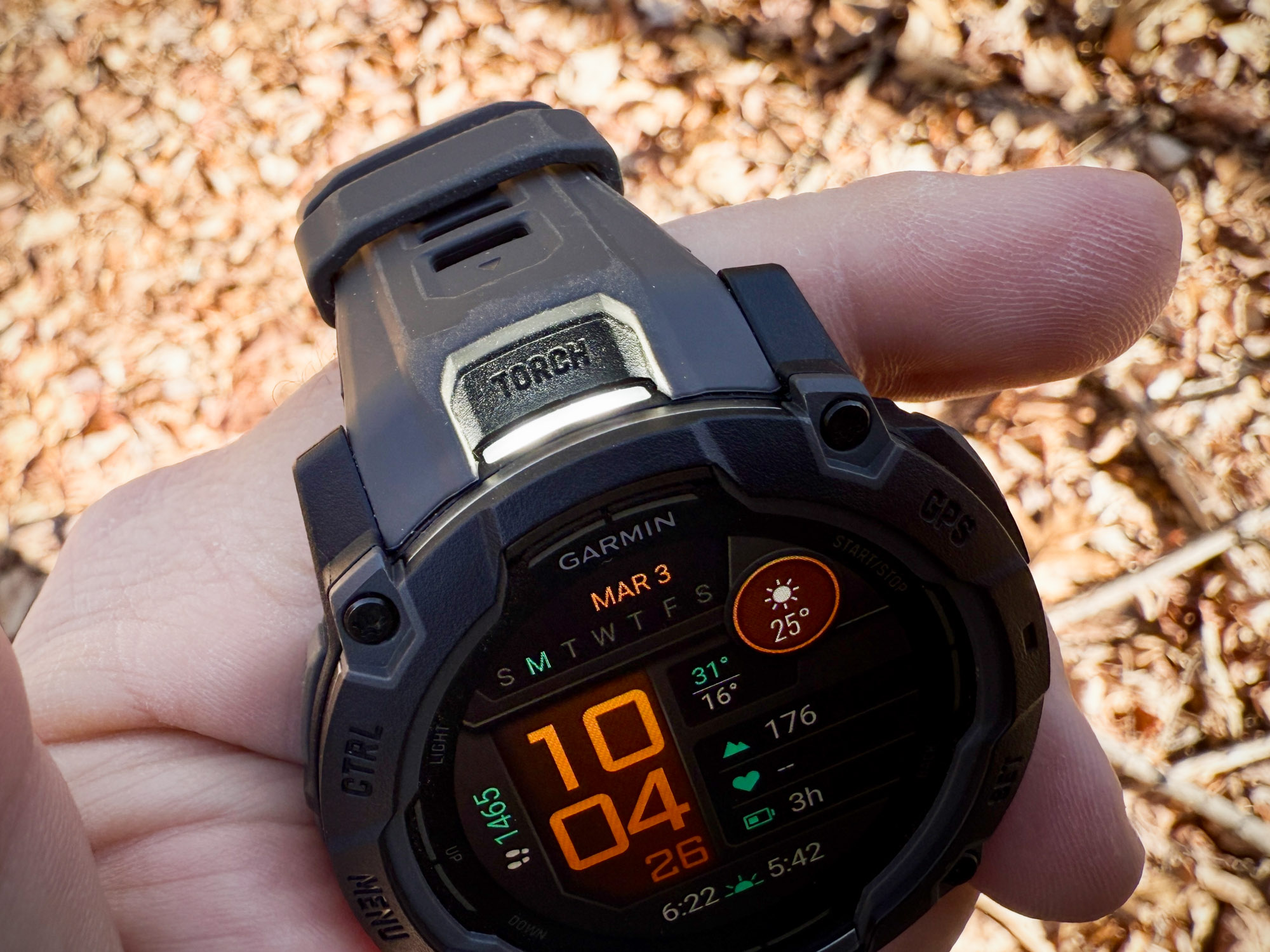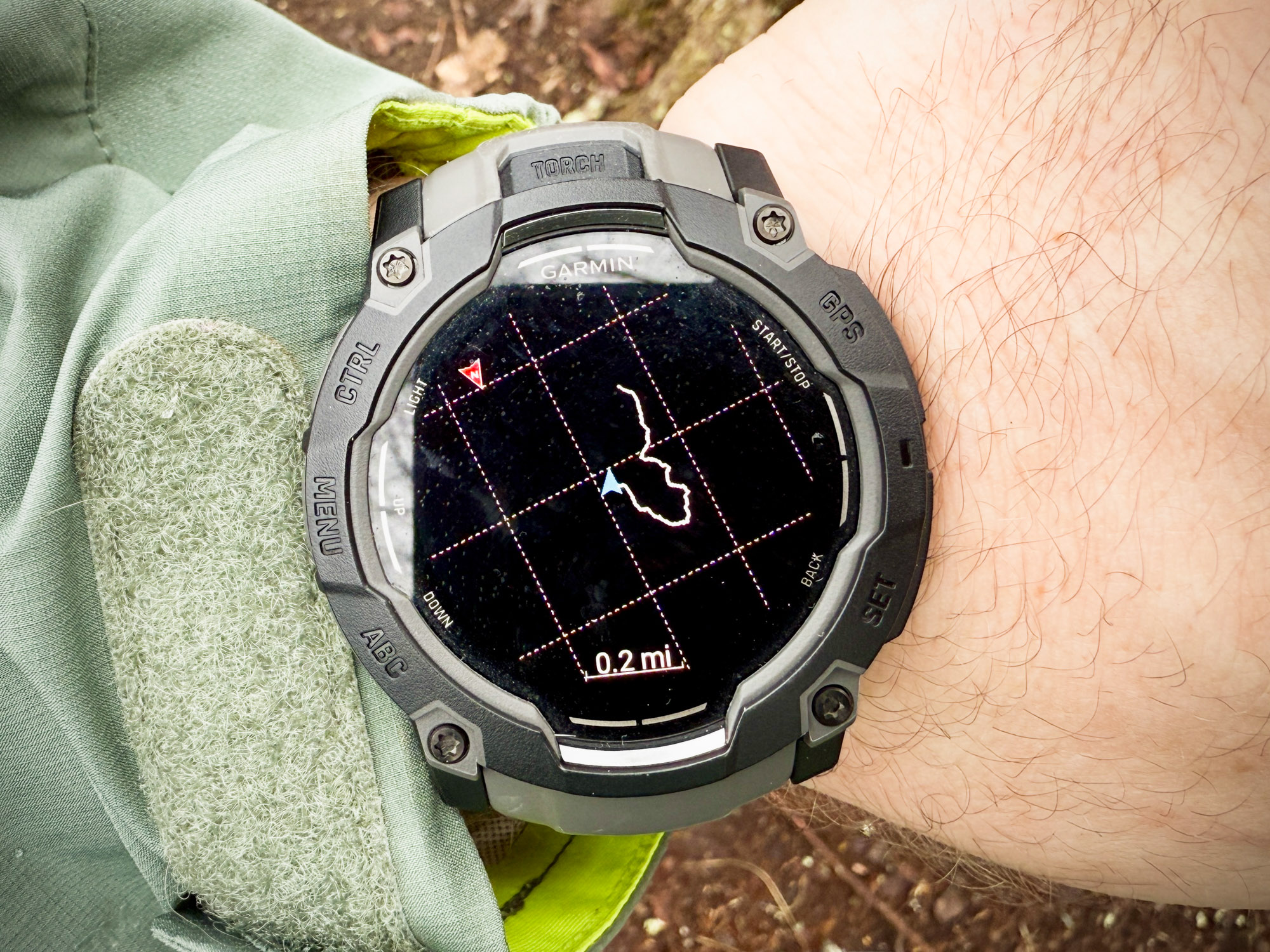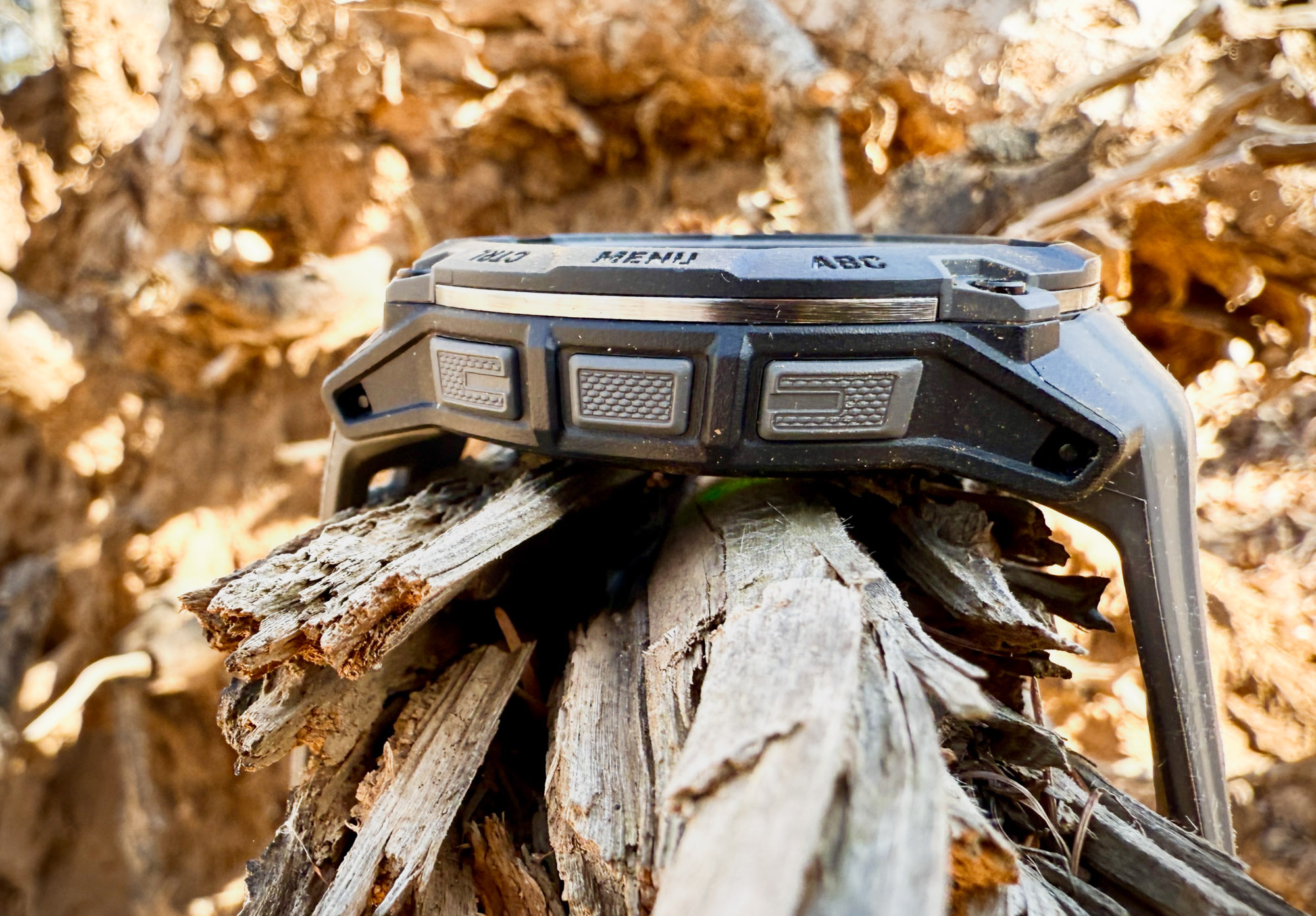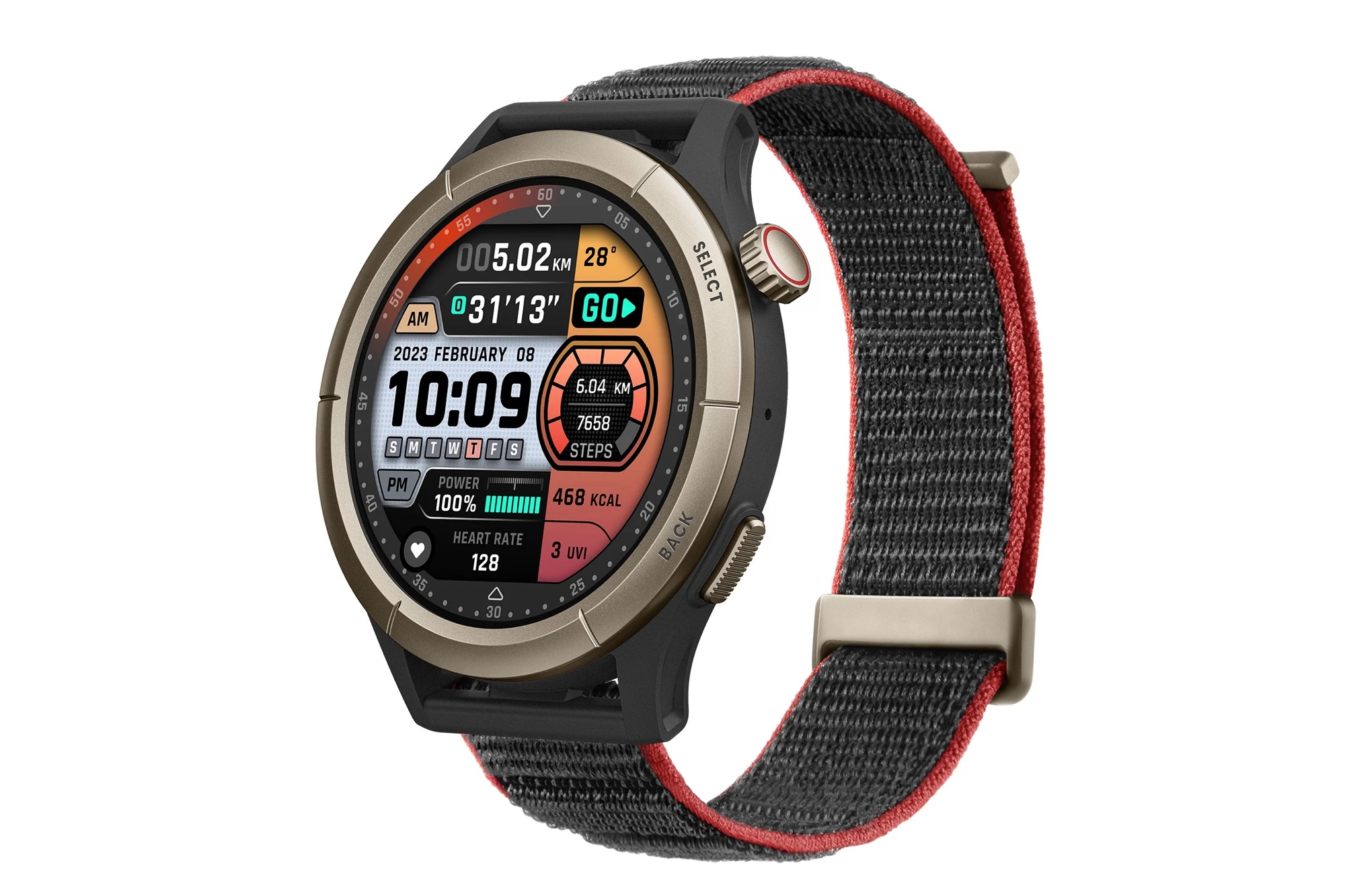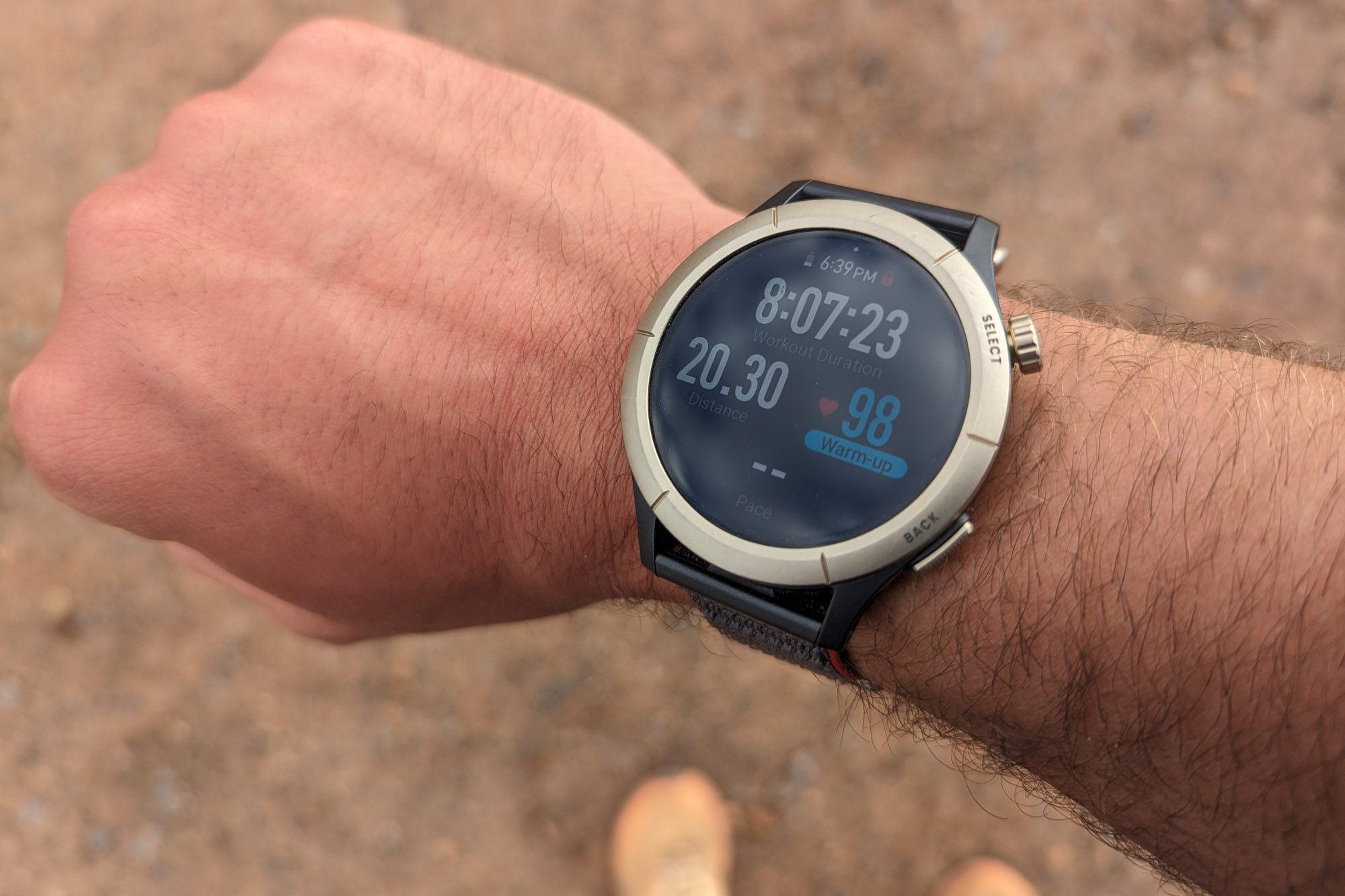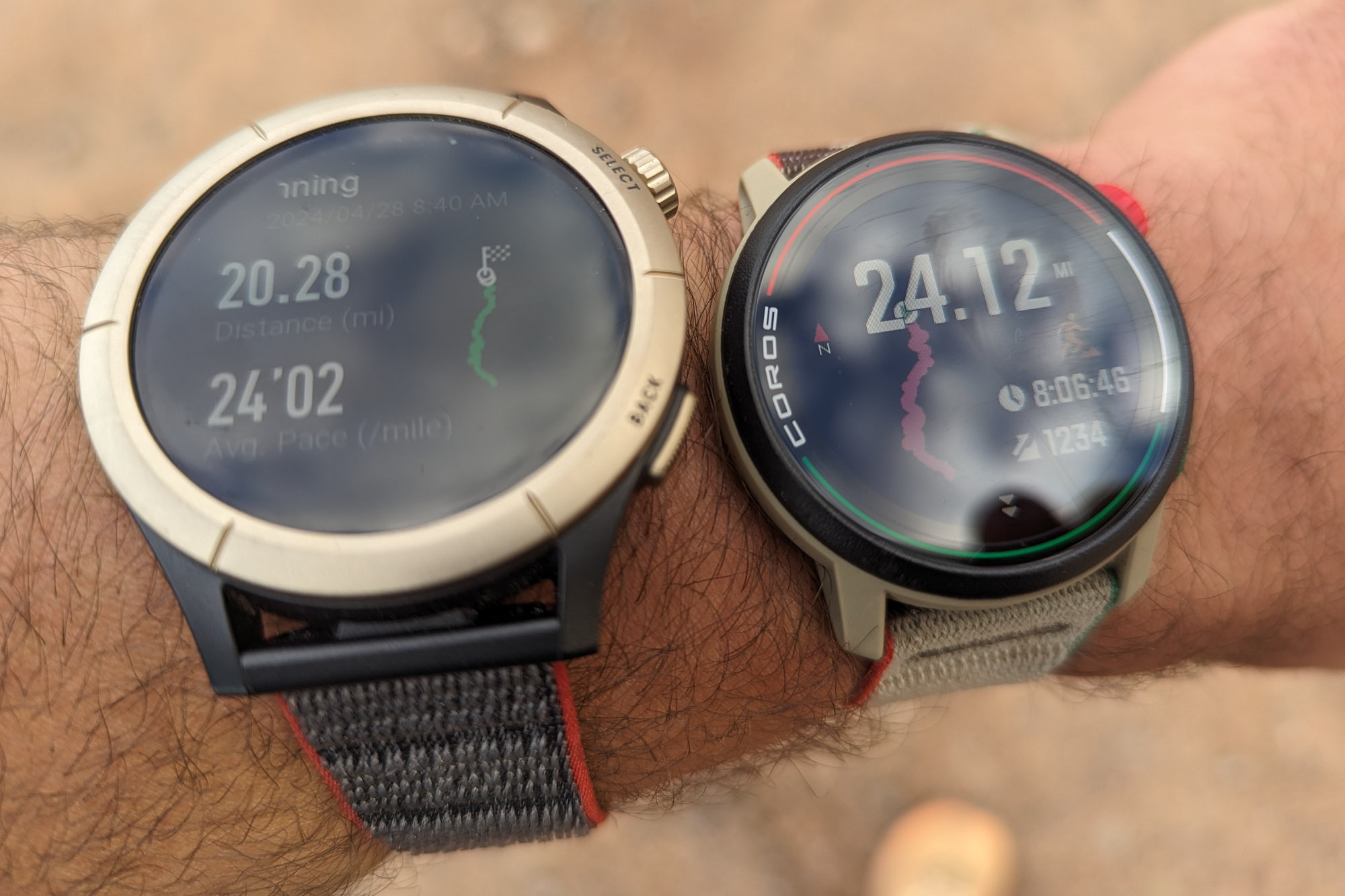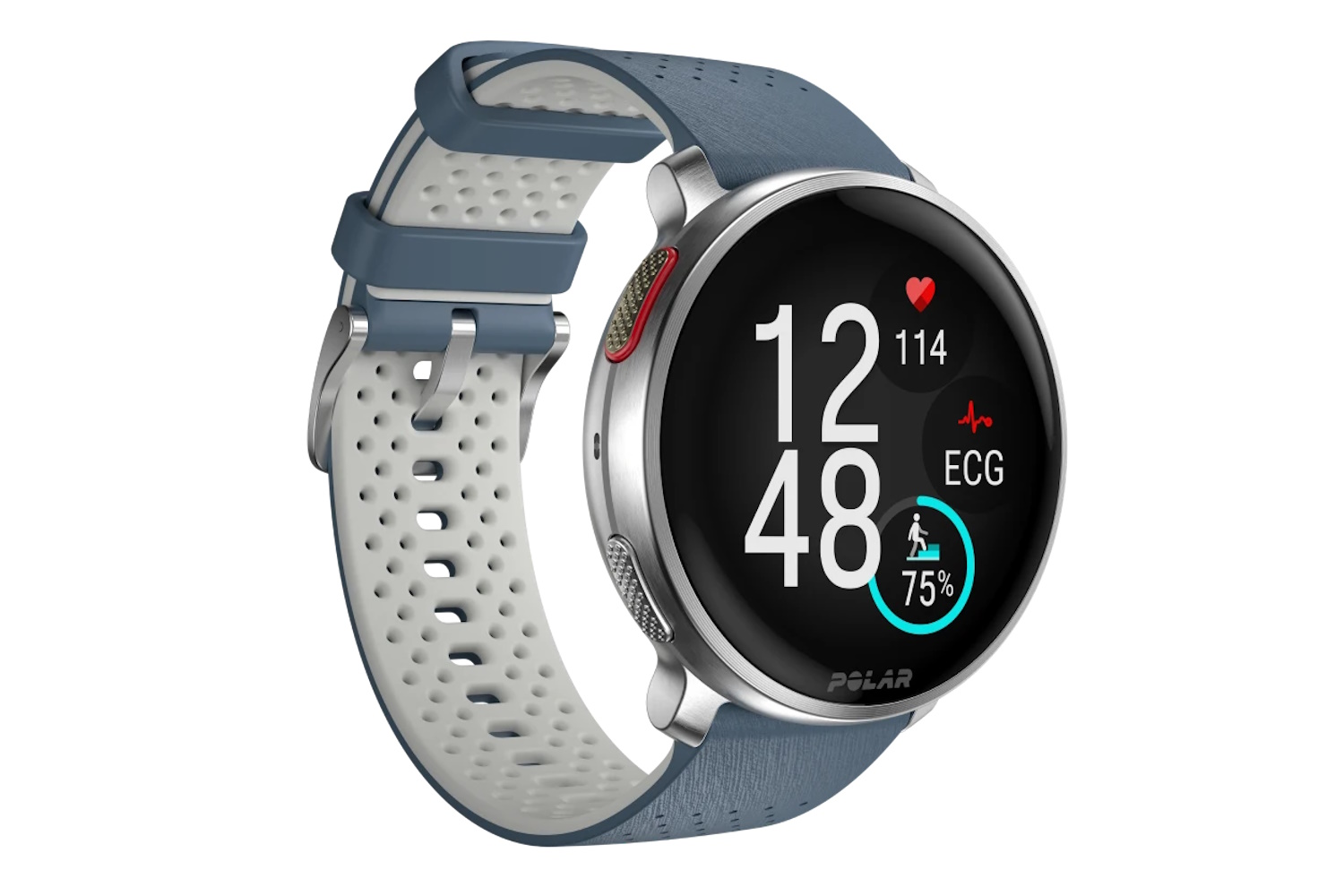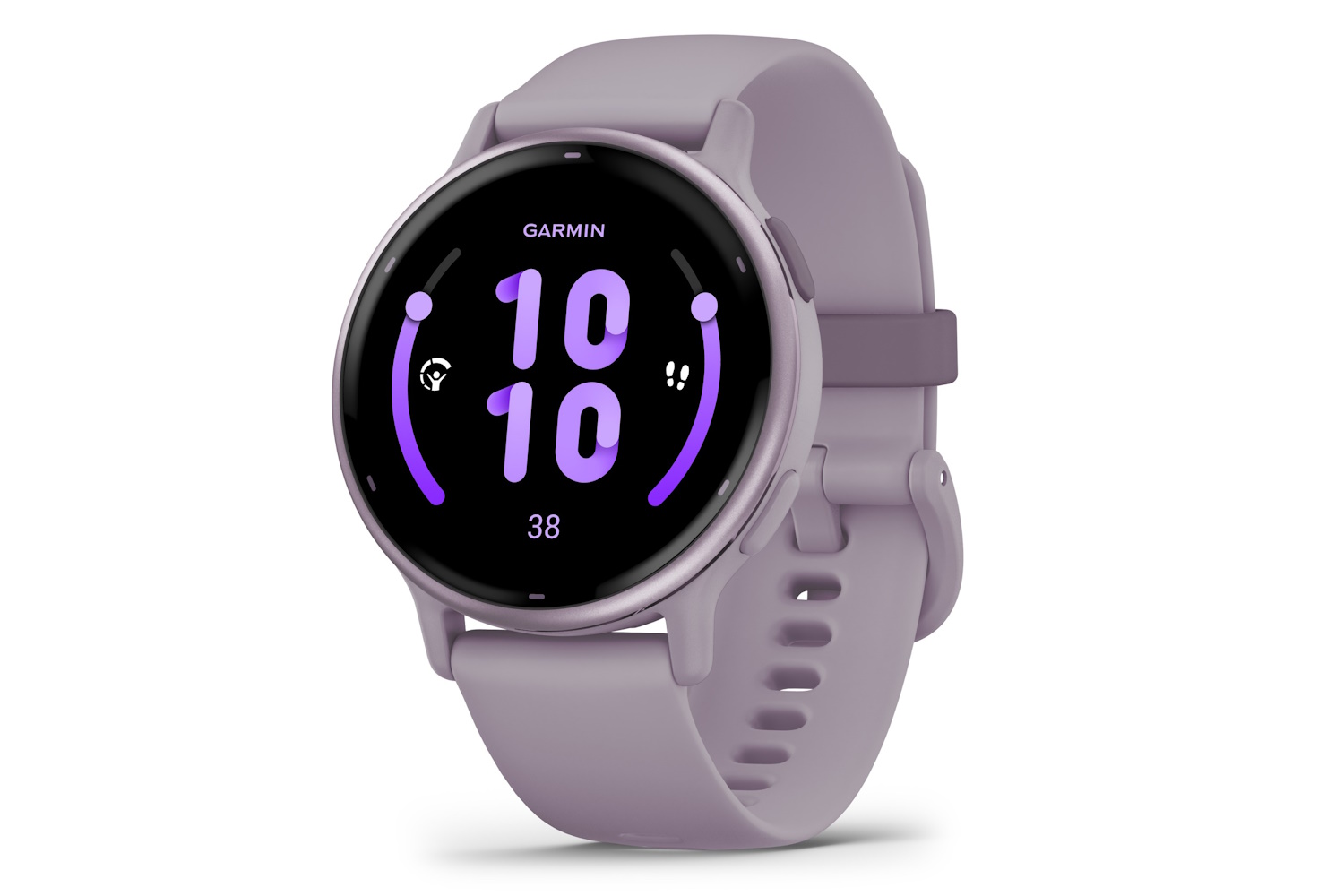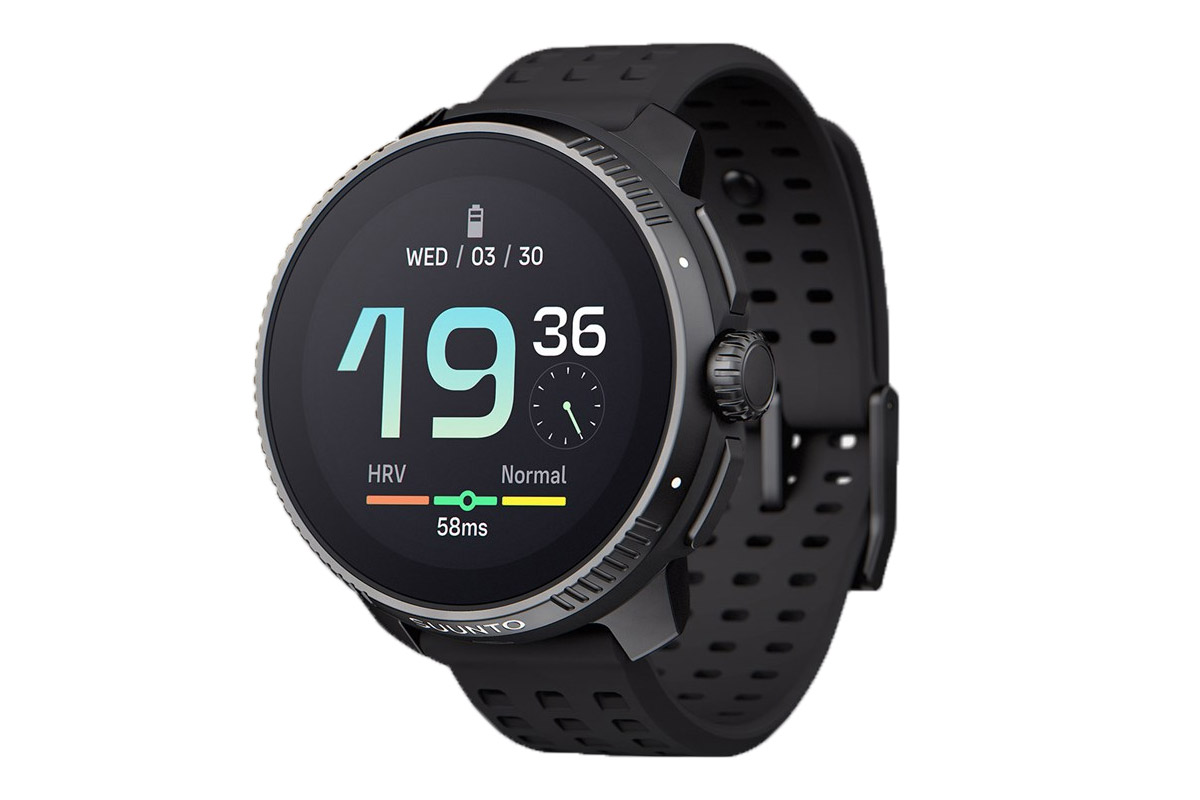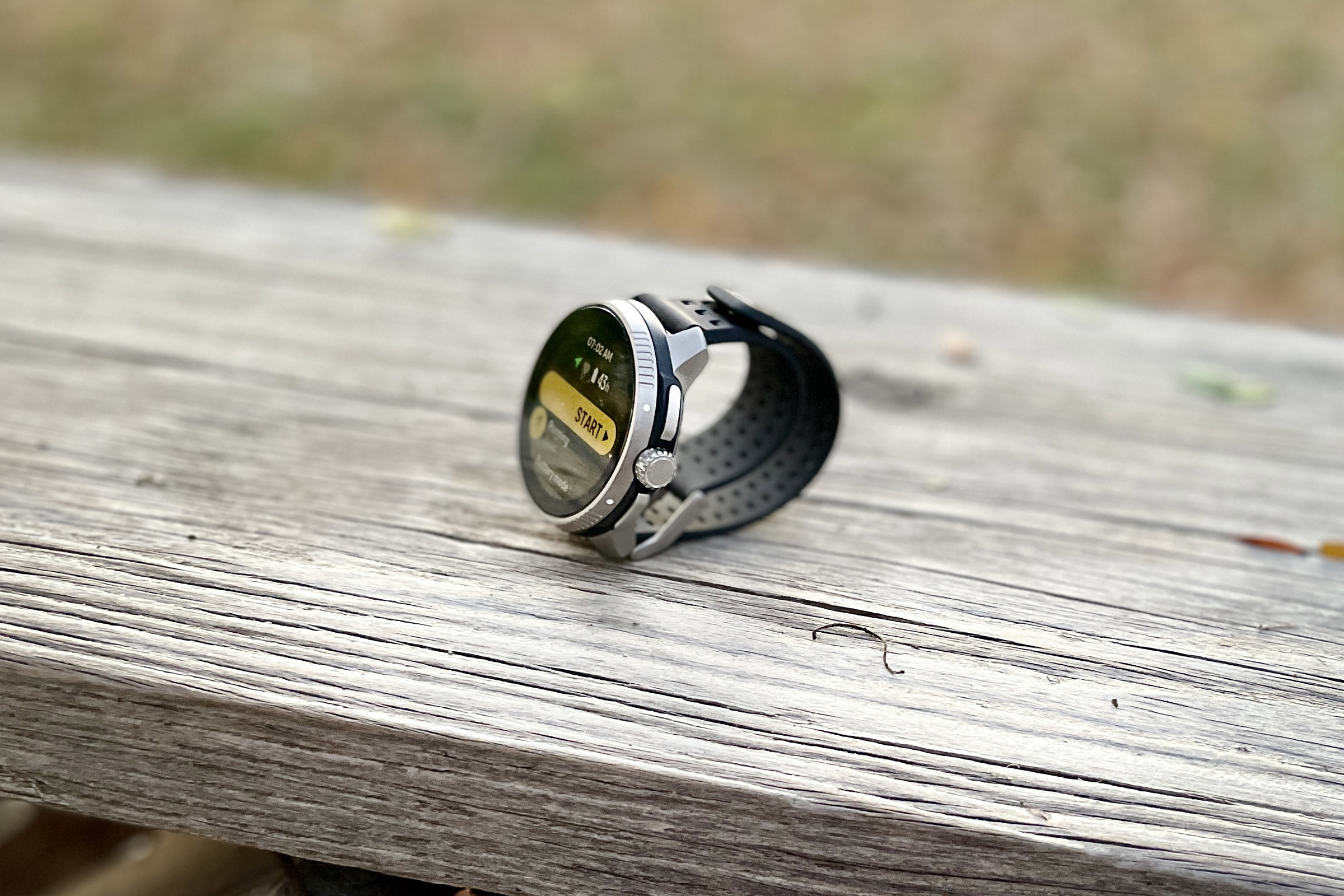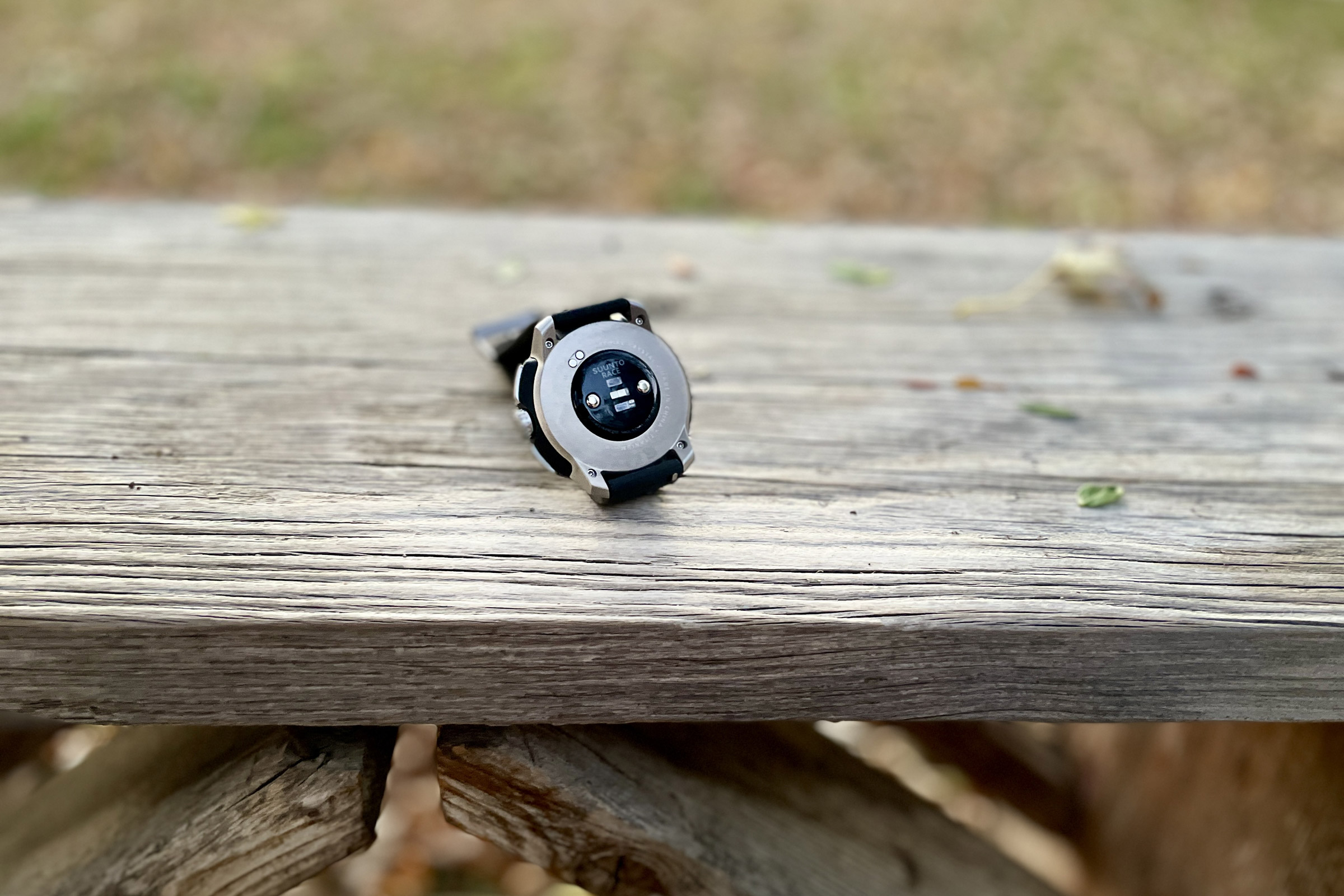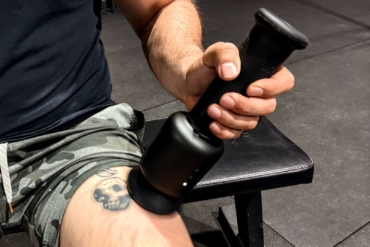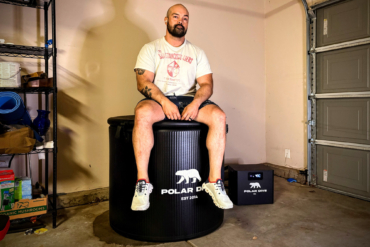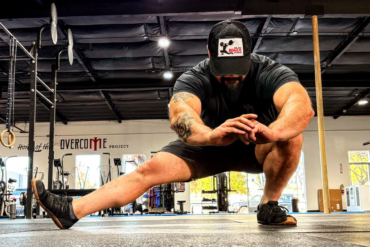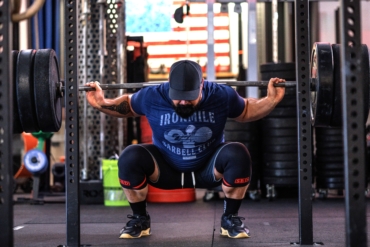Our experts have been strapping on fitness watches of all kinds for close to a decade now, testing more than 50 of the best devices and pulling together the winners for every situation in this guide. Whether you’re a marathoner tracking every BPM or just casually interested in your weekly workouts, there’s something here for you.
These watches have been tested and compared for sensor accuracy, battery life, functionality, durability, and fit. Beyond that, we’ve also taken them everywhere — from the summits of volcanoes in the Pacific Northwest to the depths of the canyonlands of Utah — and pushed these devices to the limit to see what breaks.
If you’re new to fitness tracking and want something to tally up your active minutes, options like the COROS Pace 4 are impressive for the price. Alternatively, we’ve been blown away by the feature density in top-tier watches like the Garmin fenix 8 Solar Sapphire. Whatever your specific needs, read on for the best fitness watches, GPS watches, and fitness trackers based on our testing.
Editor’s Note: We updated our Fitness Watch guide on November 21, 2025, to add the COROS Pace 4, our new best-budget choice that will only run you a cool $250, but packs in a brilliant AMOLED screen, impressive health metrics, and a good bit more for the price.
The Best Fitness Watches of 2025
Garmin fenix 8 Solar Sapphire
-
Activity Tracking and Accuracy
9.0
-
Battery Life
8.0
-
Training Data and Planning
8.0
-
Build Quality
9.0
- Battery Life: Up to 48 days with Solar
- Weight: 95g, 51mm Solar
- Case Size: 43mm, 47mm, or 51mm
- Display Size: 1.4", 51mm Solar
- Bezel Material: Stainless steel or titanium
- Water Resistance Rating: 10 ATM (100 me)
Pros
- Incredible number of functions
- Excellent data reporting through Garmin Connect
- Super-long battery life
- Functions as a dive computer
Cons
- Have to choose between AMOLED and solar
- Bulky for an everyday watch
- Expensive
COROS Pace 4
-
Value
8.0
-
Durability
7.0
-
Style
9.0
-
Performance
7.0
- Size: 43.4 x 43.4 x 11.8 mm
- Weight: 32 g with nylon strap, 40 g with silicone band
- Battery life: 6 days (always on), 19 days (gesture only)
- Global Satellite Networks: GPS, GLONASS, Galileo, BeiDou, and QZSS reception
- Screen: 1.2" AMOLED touchscreen display with mineral glass, fiber-reinforced polymer case
- Navigation capable: Breadcrumb
- Barometric altimeter and compass: Yes
- Water resistance: 5 ATM (50m)
Pros
- Improved display
- Competitive price
- Lightweight
- Reliable health tracking
- Quick navigation help
Cons
- No offline maps
- Less durable nylon polymer case and mineral glass
- Flashlight has limited usefulness
- AMOLED lowers 'always on' battery life
COROS Apex 2 Pro
-
Activity Tracking and Accuracy
8.0
-
Battery Life
7.0
-
Training Data and Planning
7.0
-
Build Quality
8.0
- Size: 46.1 x 46.5 x 14 mm
- Weight: 53 g
- Battery type: Lithium-ion
- Single-band GPS battery life: 75 hours
- Global satellite networks: GPS, GLONASS, Galileo, BeiDou, and QZSS reception
- Screen/Bezel: 1.3" sapphire screen and titanium bezel
- Navigation capable: Yes
- Barometric altimeter and compass: Yes
- Water resistance: 5 ATM (50m)
Pros
- Impressive GPS tracking
- All-encompassing activity profile suite
- Great battery life
- Comfortable band
Cons
- Limited mapping capabilities
- Dial-wheel tough to use while active
Garmin Forerunner 570
-
Activity Tracking and Accuracy
8.0
-
Battery Life
6.0
-
Training Data and Planning
7.0
-
Build Quality
7.0
- Size: 47 x 47 x 12.9 mm
- Weight: 50 g.
- Battery: Lithium-ion
- Single-band GPS battery life: 18 hours
- Global satellite networks: Multi-band GPS, GLONASS, QZSS, BeiDou, and Galileo reception
- Screen/Bezel: 1.4" Gorilla Glass 3 and aluminum
- Navigation Capable: Yes (breadcrumb tracks)
- Barometric altimeter and compass: Yes
- Water resistance: 5 ATM
Pros
- Dazzling and brighter AMOLED touchscreen display
- Smart Garmin health stats and reports
- Speaker and microphone for voice commands and assistants
- Multi-band GNSS reception with SatIQ tech
- USB-C charging
Cons
- Battery life is lesser than previous Forerunner 265
- Price is tough to justify for some
- No ECG support
- Basic breadcrumb mapping
Apple Watch Ultra
-
Activity Tracking and Accuracy
7.0
-
Battery Life
6.0
-
Training Data and Planning
6.0
-
Build Quality
7.0
- Size: 49 x 44 x 14.4 mm
- Weight: 61.4 g.
- Battery: Lithium-ion
- Single-band GPS battery life: 12 hours
- Global satellite networks: Multi-band GPS, GLONASS, Galileo, and BeiDou reception
- Screen/Bezel: Sapphire crystal and titanium
- Navigation capable: With cell service (limited without)
- Barometric altimeter and compass: Yes
- Water resistance: 10 ATM (100m)
Pros
- Depth of smartwatch features and downloadable apps
- Ease of answering calls and texts without a phone connection
- Advanced health monitoring
- Large, clear display
Cons
- Not incredible battery life
- Heavier device
Fitbit Charge 6
-
Activity Tracking and Accuracy
6.0
-
Battery Life
6.0
-
Training Data and Planning
5.0
-
Build Quality
6.0
- Size: 38 x 18.5 x 11.6mm
- Weight: 37 g.
- Battery: Lithium-polymer
- Single-band GPS battery life: 5 hours in GPS mode
- Global satellite networks: GPS + GLONASS reception
- Screen/Bezel: 1" glass, aluminum, and resin
- Navigation capable: No
- Barometric altimeter and compass: No
- Water resistance: 5 ATM (50M)
Pros
- GPS tracking without phone connection
- Health-tracking metrics
- Google apps built in
- Affordable
Cons
- Very basic sports tracking
- Small screen
- No non Google app controls
Whoop Band 4.0
-
Activity Tracking and Accuracy
7.0
-
Battery Life
6.0
-
Training Data and Planning
7.0
-
Build Quality
8.0
- Battery Life: Up to 5 days
- Weight: 28 g
- Case Size: 1.7" x 1.1",
- Display Size: N/A
- Bezel Material: Stainless steel
- Water Resistance Rating: IP68
Pros
- Super low profile on wrist
- Provides recovery data
- Excellent sleep monitoring
- Easy to use phone app
Cons
- Underestimation of strength-related activities
- Monthly or annual subscription is required
- Not a full-fledged fitness watch
Other Fitness Watches to Keep Track With
The seven awarded watches above are highly capable fitness trackers, and we think they’re the best in class in their respective niches. However, we’ve tested the entire range of fitness watches today and identified some additional options to consider.
-
Activity Tracking and Accuracy
8.0
-
Battery Life
9.0
-
Training Data and Planning
8.0
-
Build Quality
8.0
- Size: 51 x 51 x 15.7 mm
- Weight: 63 g
- Battery: Lithium-ion
- Single-band GPS battery life: 320 hours (with solar charging)
- Global Satellite Networks: Multi-band GPS, GLONASS, Galileo, BeiDou, and QZSS reception
- Screen/Bezel: 1.4" fiber reinforced polymer and titanium bezel with Power Sapphire lens
- Navigation capable: Yes
- Barometric altimeter and compass: Yes
- Water resistance rating: 10 ATM
Pros
- Incredible battery life (when the sun is shining)
- SatIQ tech makes smart satellite choices to limit battery consumption
- Operating system is smooth and bug free
- 6-LED heart rate monitor with HRV capability
Cons
- Watch is a bit tall on the wrist
- Textile watch band won't be everyone's favorite
-
Activity Tracking and Accuracy
7.0
-
Battery Life
7.0
-
Training Data and Planning
6.0
-
Build Quality
6.0
- Size: 41.9 × 41.9 × 13 mm
- Weight: 30 g with nylon strap, 38 g with silicone band
- Battery: Lithium-ion
- Single-band GPS battery life: 38 hours
- Global Satellite Networks: GPS, GLONASS, Galileo, BeiDou, and QZSS reception
- Screen/Bezel: 1.2" Corning glass touchscreen and fiber-reinforced polymer
- Navigation Capable: Breadcrumb
- Barometric altimeter and compass: Yes
- Water Resistance: 5 ATM (50m)
Pros
- Extremely competitively priced
- Outstanding battery life for the price
- Dual-frequency GNSS reception
- On-device 4GB music storage
- Next-generation 5 LED heart rate monitor
Cons
- Less durable nylon polymer case and mineral glass
- Feels lightweight and less sturdy
- Lack of training and coaching insight compared to rivals
-
Activity Tracking and Accuracy
7.0
-
Battery Life
8.0
-
Training Data and Planning
6.0
-
Build Quality
7.0
- Size: 49 x 49 x 13.6 mm
- Weight: 74 g.
- Battery: Lithium-ion
- Single-band GPS battery life: 90 hours in Endurance GPS mode; 140 hours with solar version
- Global satellite networks: Multi-band GPS, GLONASS, Galileo, QZSS, and Beidou reception
- Screen/Bezel: 1.4" sapphire crystal and stainless steel/titanium
- Navigation capable: Yes
- Barometric altimeter and compass: Yes
- Water resistance: 10 ATM (100m)
Pros
- Free detailed topographic maps downloadable to the watch
- Impressive battery numbers, with available solar charging
- Dual-band GNSS reception
- Wi-Fi connectivity
Cons
- Screen transition sometimes lags
- No music storage on device
-
Activity Tracking and Accuracy
7.0
-
Battery Life
6.0
-
Training Data and Planning
7.0
-
Build Quality
7.0
- Size: 50 x 50 x 14.9 mm
- Weight: 59 g
- Battery: Lithium-ion
- Single-band GPS battery life: 32 hours
- Global satellite networks: Multiband GPS, GLONASS, and Galileo reception
- Screen/Bezel: 1.3" fiber reinforced polymer and aluminum
- Navigation capable: Yes
- Barometric altimeter and compass: Yes
- Water resistance rating: 10 ATM (100 M) + MIL-STD-810
Pros
- Brilliant AMOLED screen
- Lightweight yet rugged
- MIL-STD-810 mil-spec thermal and shock resistant
- LED flashlight
- Onboard monitoring features
Cons
- Simple breadcrumb navigation
- Battery life isn't the best out there
- There is no AMOLED and solar version
-
Activity Tracking and Accuracy
6.0
-
Battery Life
6.0
-
Training Data and Planning
6.0
-
Build Quality
5.0
- Size: 47 x 47 x 11.8 mm
- Weight: 43 g with band
- Battery: 440mAh capacity
- Single-band GPS battery life: 26 hours in accuracy mode
- Global Satellite Networks: 6 satellite positioning systems with L1 & L5 reception
- Screen/Bezel: 1.45” AMOLED Corning glass touchscreen with titanium alloy bezel
- Navigation Capable: Yes
- Barometric Altimeter and Compass: Yes
- Water Resistance: 5 ATM (50m)
Pros
- Fully featured
- Excellent battery life
- Durable
- Responsive touchscreen
Cons
- Bulky fit for smaller wrists
- GPS tracking trouble in canyons
- The Zepp app feels overbuilt with many ‘premium’ features requiring payment
-
Activity Tracking and Accuracy
7.0
-
Battery Life
8.0
-
Training Data and Planning
7.0
-
Build Quality
7.0
- Size: 47 x 47 x 14.5 mm
- Weight: 57 g.
- Battery: Lithium-polymer
- Single-band GPS battery life: Up to 61 hours
- Global satellite networks: GPS, GLONASS, Galileo, BeiDou, and QZSS reception
- Screen/Bezel: 1.4" Gorilla Glass and aerospace aluminum
- Navigation capable: Yes
- Barometric altimeter and compass: Yes
- Water resistance: WR50 (50m)
Pros
- Outstanding battery life
- Heart rate monitoring
- Strava Live Segments
Cons
- Expensive
- Weak and delayed button action
- Dull and simple app
- Unintuitive interface
-
Activity Tracking and Accuracy
6.0
-
Battery Life
6.0
-
Training Data and Planning
6.0
-
Build Quality
7.0
- Size: 42.2 x 42.2 x 11.1 mm
- Weight: 36 g.
- Battery: Lithium-ion
- Single-band GPS battery life: 21 hours
- Global satellite networks: GPS, GLONASS, and Galileo reception
- Screen/Bezel: 1.2" Corning Gorilla Glass and anodized aluminum
- Navigation capable: No
- Barometric altimeter and compass: No altimeter, yes compass
- Water resistance: 5 ATM (50m)
Pros
- More affordable than comparative watches
- Competitive training/health data for the type of watch
- Smart lifestyle trackers and apps
Cons
- Buttons are not very responsive
-
Activity Tracking and Accuracy
7.0
-
Battery Life
7.0
-
Training Data and Planning
7.0
-
Build Quality
7.0
- Size: 49 x 49 x 13.3 mm
- Weight: 70 g. (Titanium version)
- Battery: Lithium-ion
- Single-band GPS battery life: 50 hours in Endurance mode
- Global satellite networks: GPS, GLONASS, Galileo, QZSS, BeiDou
- Screen/Bezel: 1.4" sapphire crystal and stainless steel
- Navigation capable: Yes
- Barometric altimeter and compass: Yes
- Water resistance: 10 ATM (100m)
Pros
- Beautifully crisp and clear AMOLED display
- Digital dial for quick scrolling in and around maps
- Worldwide offline GPS maps
- Massive screen is easy to read
- Beautiful build quality, materials, and aesthetic
Cons
- No offline music via third-party streaming services like Spotify
- Unlabeled and unmarked maps
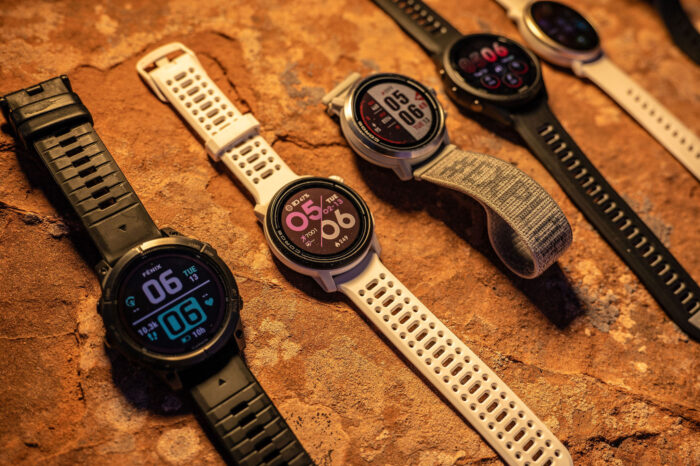
Fitness Watch Comparison Chart
| Fitness Watches | Price | Size | Weight | Battery (GPS) | GNSS Reception |
|---|---|---|---|---|---|
| Garmin fenix 8 | $1,100 | 47 x 47 x 15.2 mm | 80 g | 92 hours | Multi-band GPS, GLONASS, Galileo, BeiDou, and QZSS |
| COROS Pace 4 | $249 | 43.4 x 43.4 x 11.8 mm | 40 g | 41 hours | GPS, GLONASS, Galileo, BeiDou, and QZSS |
| COROS Apex 2 Pro | $449 | 46.1 x 46.5 x 14 mm | 53 g | 75 hours | GPS, GLONASS, Galileo, BeiDou, and QZSS |
| Garmin Forerunner 570 | $550 | 47 x 47 x 12.9 mm | 50 g | 18 hours | Multi-band GPS, GLONASS, QZSS, BeiDou, and Galileo |
| Apple Watch Ultra | $799 | 49 x 44 x 14.4 mm | 61 g | 12 hours | Multi-band GPS, GLONASS, Galileo, and BeiDou |
| Fitbit Charge 6 | $150 | 38 x 18.5 x 11.6 mm | 37 g | 5 hours | GPS, GLONASS |
| Whoop Band 4.0 | $239 | 43 x 28 x 11 mm | 28 g | 120 hours | GPS |
| Garmin Enduro 3 | $900 | 51 x 51 x 15.7 mm | 63 g | 320 hours | Multi-band GPS, GLONASS, Galileo, BeiDou, and QZSS |
| COROS Pace 3 | $200 | 41.9 × 41.9 × 13 mm | 30 g | 38 hours | GPS, GLONASS, Galileo, BeiDou, and QZSS |
| Suunto Vertical | $499 | 49 x 49 x 13.6 mm | 74 g | 90 hours | Multi-band GPS, GLONASS, Galileo, QZSS, and Beidou |
| Garmin Instinct 3 AMOLED | $500 | 50 x 50 x 14.9 mm | 59 g | 32 hours | Multi-band GPS, GLONASS, and Galileo |
| Amazfit Cheetah Pro | $300 | 47 x 47 x 11.8 mm | 43 g | 26 hours | 6 satellite positioning systems with L1 & L5 reception |
| Polar Vantage V3 | $700 | 47 x 47 x 14.5 mm | 57 g | 61 hours | GPS, GLONASS, Galileo, BeiDou, and QZSS |
| Garmin vívoactive 5 | $300 | 42.2 x 42.2 x 11.1 mm | 36 g | 21 hours | GPS, GLONASS, and Galileo |
| Suunto Race | $399 | 49 x 49 x 13.3 mm | 70 g | 50 hours | Multi-band GPS, GLONASS, Galileo, QZSS, BeiDou |
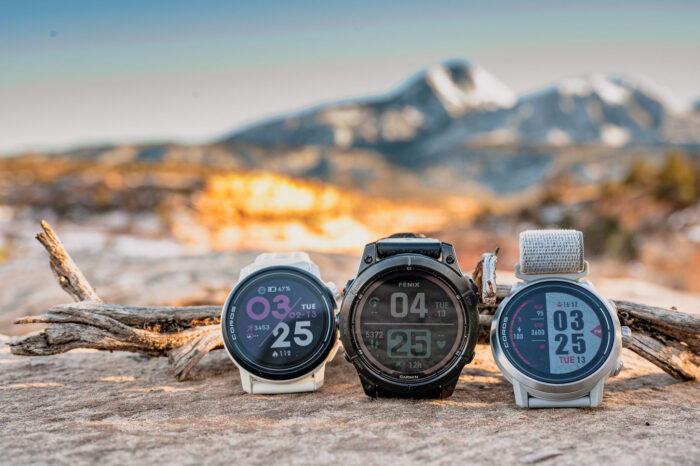
How We Tested the Best Fitness Watches
Comparing fitness watches can be a fairly complicated task, as there is a blizzard of different sensors and metrics to compare. To truly gain a good understanding of each watch, it takes a solid week or more to accumulate the logged data. Thankfully, this is what we’re here for, and our in-house experts have the know-how to compare everything from the differences in optical heart rate monitors to dual-band satellite reception and tracking.
- Field testing: When we truly hit the field, our testers aim to get each of these watches out for at least three different types of activity tracking modes — running, cycling, and swimming are our most commonly used.
- Health data tracking and measurement: After this, we compare track lengths, measure heart rate data against dedicated chest-strap devices, challenge the satellite reception with difficult terrain, and run each of these watches completely dead — all in the name of winnowing out the chafe and finding the best fitness watches available today.
- Battery charging and waterproofing tests: Recharging times from a completely discharged state are timed, as are discharge rates with watches in their lowest power consumption modes. Water resistance is also challenged with the help of our garden hose.
- Our fitness watch rating system:
- Activity Tracking & Accuracy: The variety, accuracy, and types of data collected during your activities is the whole point of a fitness watch, and we rank it highly whenever we run a unit through the paces. Besides looking at overall activity types and the information collected, we compare the watches against known standards such as running on a track or counting reps.
- Battery Life: We specifically examine battery life when using GPS tracking to compare run times and aim for at least a solid day’s worth of battery power to earn a high score in this metric. Anything more than this puts the watch in the endurance category, and anything less means it’s likely a smartwatch with fitness features.
- Training Data & Planning: Most fitness watches utilize data from your fitness activities to create personalized training plans, but the style and complexity of these plans can vary significantly. We look for advanced metrics that take into account your overall health, such as sleep tracking, as well as associated apps that allow you to input additional data, like food intake or adjust tracked activities.
- Build Quality: Ultimately, we assess the overall build quality of these watches when rating them. Bezels and watch faces can vary in construction, with those sporting sapphire glass and titanium earning higher scores. We also look for high-quality optical heart rate monitors, straps, and charging solutions.
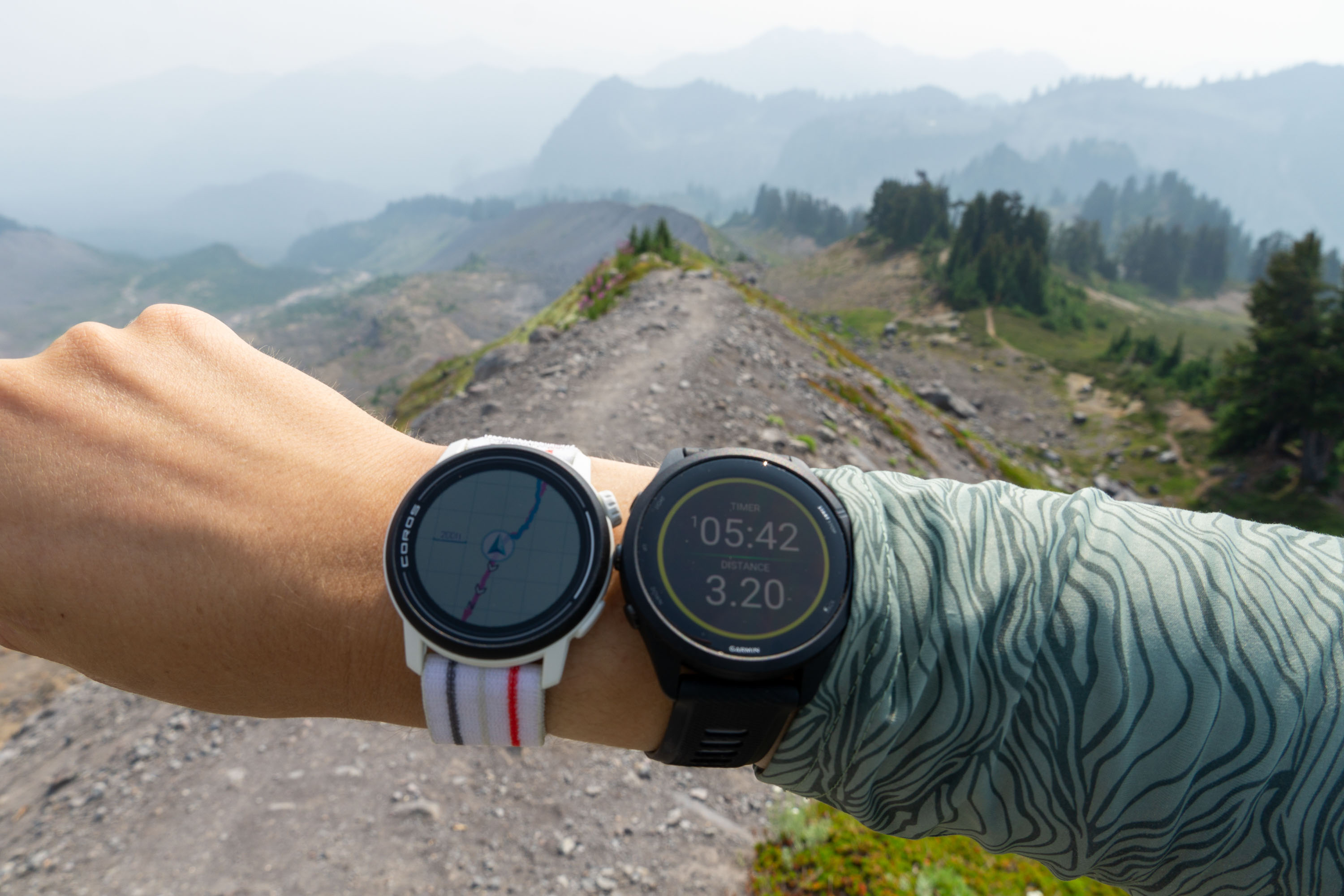
Our Testing Process and Testing Grounds
Our experts have crafted a detailed testing regimen that aims to compare these watches on a level playing field. It’s not uncommon for our testers to wear three or more watches at once to give them a fair shake.
From the start, we aim to use these watches in two broad field testing categories: gym work and outdoor activities. Our time in the gym provides us with deep insights into the nitty-gritty comparisons between watches when it comes to heart rate tracking and training suggestions, as well as the finer details, such as which watches count our reps the most accurately and which have the best sense of when we need to recover.
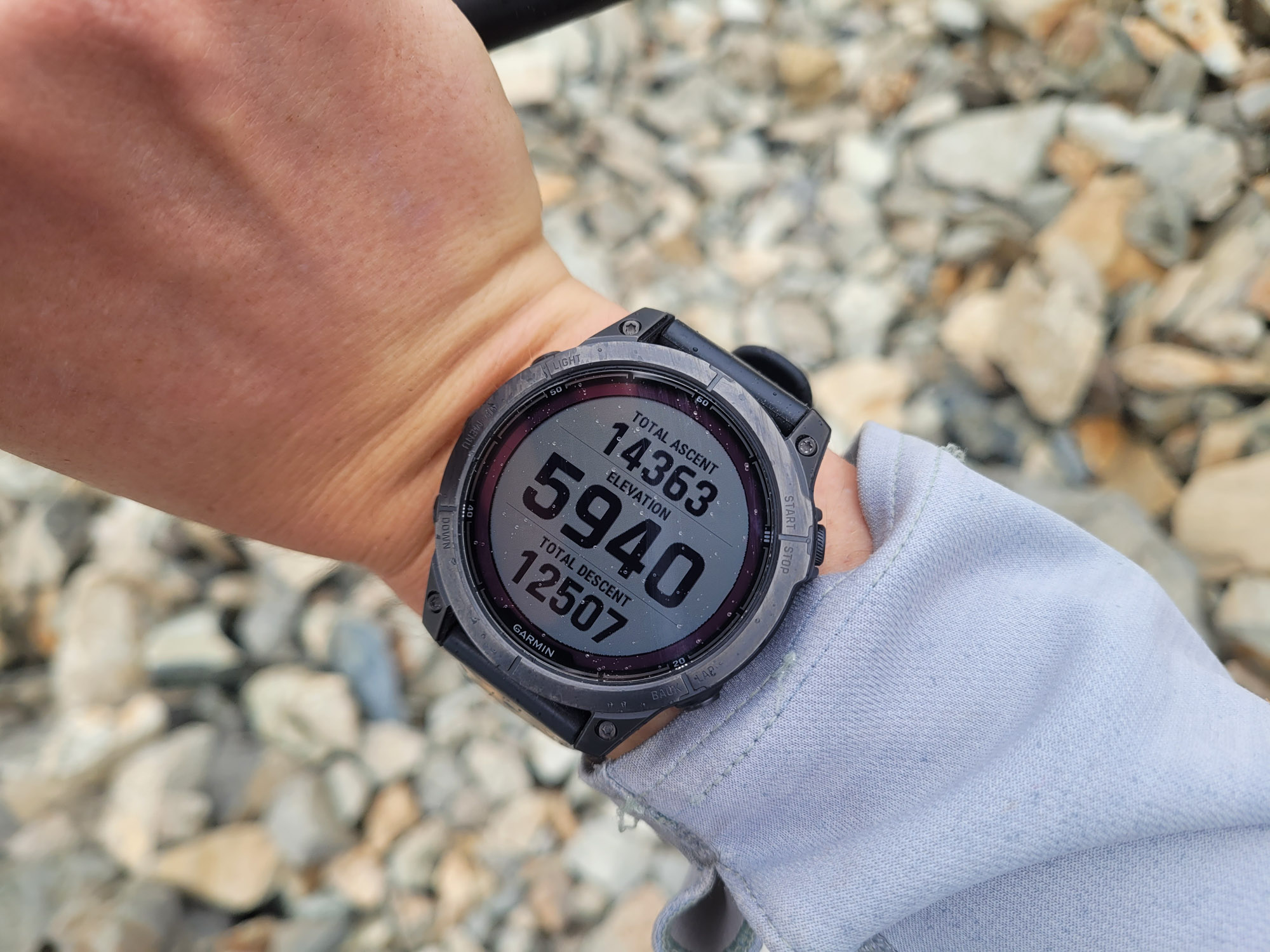
Our Expert Testers
GearJunkie knows fitness, and our testers know their watches. The team includes Cory Smith, an online running coach and freelance journalist with over 25 years of running and rock climbing experience. He’s an expert, from treadmills to shoes.
Our most recent fitness watch update saw contributor Ilana Newman saddled with more watches than she has wrists to put them on, putting them through the paces in southwest Colorado while trail running, backcountry skiing, and working through daily fitness regimens. The San Juan mountains provided the perfect testing ground for this new generation of watches, and Newman is obsessed with training data and staying up to date on the newest outdoor gear.
Beyond their personal expertise, GearJunkie has solicited the opinions of fellow runners, hikers, and climbers. When the dust settled and the final grades came in, the list above represented the best fitness watches we could drum up. But know that fitness tech is constantly improving, and new functionalities are being added daily to some of these watches. As they improve, so does our coverage, and we’ll continue to test them.

Buyer’s Guide: How to Choose the Perfect Fitness Watch
The fitness watch market can be overwhelming. There are so many options — all of which might seem similar — that it can feel as though you need a college degree to tell them apart.
While finding the best fitness watch for you does require some thought and research, this handy how-to-choose guide has all the essential information compiled so you can make the best decision for your fitness watch needs.
We go into everything from GPS reception to how training data is used to provide health and performance predictions. Each brand of watch uses slightly different data and provides different features, each of which is more or less important to consumers. We’ll spell it all out for you so you can make an informed decision that works for your specific fitness, health, and performance goals.
Smartwatches, GPS Watches, and Fitness Trackers

There are three very distinct categories of watches, each with strengths and weaknesses. Smartwatches are basically small smartphones for your wrist where you can add apps and take calls without your phone.
The most popular smartwatches are Apple and Samsung Galaxy watches. Functionally, they’re geared toward convenience and health tracking, but they tend to fall short on battery life, GPS accuracy, and workout functionality.
GPS watches such as Garmin, COROS, Suunto, and Polar are designed primarily for workouts that require GPS functionality (running, cycling, hiking, swimming, etc.). They tend to have over triple the battery life of smartwatches and are very strong with workout features, metrics, and tracking.
While most will allow text and email messages, and many provide storage for music or access to streaming apps like Spotify, they’re limited in the scope of apps you can add and will not replace your smartphone.
Fitness trackers have the least functionality and only track health and fitness metrics such as resting and variable heart rate, sleep patterns, and steps. Most will need to stay connected to a phone for features like GPS tracking.
Activity Tracking
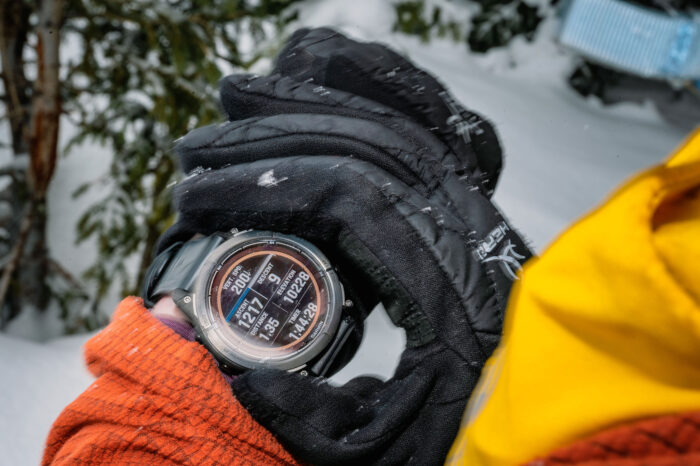
Today’s fitness watches can track just about any activity imaginable, ranging from running to indoor rock climbing and even surfing. We’ve found that watches labeled as “outdoor” or “multisport” not only tend to be able to track the more obscure activities but also do so with more detail and granularity. As a result, this increased level of functionality tends to come with a higher price tag.
Some more entry-level watches do allow you to create new activity profiles for sports that are not built-in, but most of the time these only allow you to track the basics like heart rate, time, etc.
For example, while you could track rock climbing with the Garmin vívoactive 5, it does not have a specific profile for it, so you would only get basic data logged for that workout by using a different activity profile, such as cardio. The Garmin fenix 8, however, has specific rock climbing (indoor climbing, climbing, and bouldering) activity profiles that allow you to track each route, the grade of the route, and the length of each climb.
Backcountry skiing is another specific activity that testers found lacking on some of the lower-end watches, as a session includes both uphill and downhill travel, logging it without a backcountry skiing-specific activity profile creates an inaccurate representation. Even using cross-country skiing as a substitute on the Fitbit Charge 6 did not provide the same overall picture as using a backcountry skiing profile on a watch like the Polar Vantage V3.
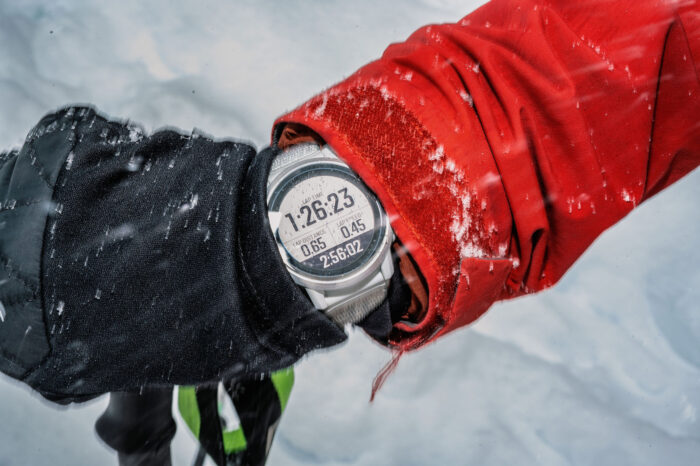
Depending on the brand and the activity being tracked, you will be able to see different data both during the activity and in the activity summary after completion. If the watch supports navigation, and you’re tracking an activity that involves moving, one screen will feature a map with your location.
High-end Garmin watches like the fenix 8 series feature over 80 activity profiles with the ability to add more. The Polar Vantage V3 can hold up to 14 profiles on the watch and requires the Polar Flow app to edit or add more. COROS watches have about 30 activity profiles, but veer more toward technical outdoor activities instead of gym activities like Fitbit fitness trackers do.
All the watches we tested tracked common activities such as walking, running (outdoor, trail, treadmill), outdoor and indoor cycling, yoga, elliptical, general strength, and cardio sessions. If there’s a less-common sport you’d like to track, we suggest checking the watch’s spec sheet to see if it’s covered.
Training and Coaching

As fitness watches have gotten better at tracking health and fitness data, companies have been able to use that data to give guidance on training. As a full-time running coach, our tester Cory Smith finds this particularly interesting.
He sees most runners struggle because they overtrain or undertrain. Garmin and Polar seem to have the best training and coaching insights, with COROS right behind them.
Garmin, as the leader in the field for training data and even coaching through the watch interface, has a few statistics that seem to be included across its newest watches, no matter how high-end it is. Even these baseline stats can provide a good overview of training readiness and recovery.
Recovery time, for example, is included on both the vívoactive 5 and the fenix 8. Garmin’s recovery time uses data from your past workouts, including your recent and long-term training load and VO2 max. Other data, like sleep and stress tracking, can also impact recovery time.
Another now-standard piece of training data for Garmin is Heart Rate Variability Status (HRV), which tracks the time in between heartbeats to determine the level of stress your body is currently under, due to training load, life, lack of sleep, and more.
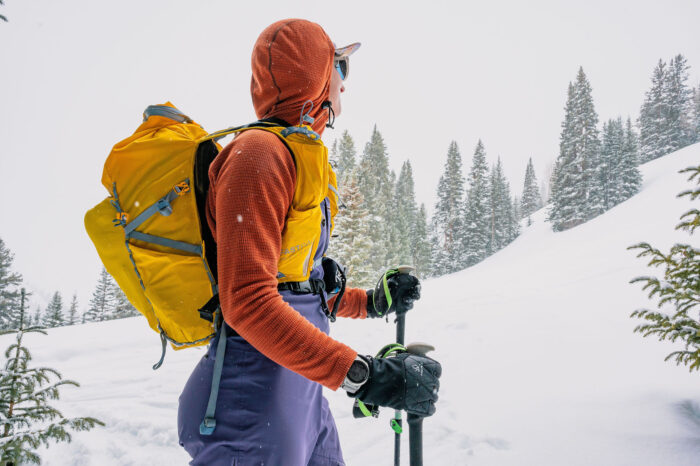
Garmin also uses all of the data it constantly gathers during the day and activity tracking to provide workout suggestions. High-end watches, like the fenix 8 or Enduro 3, provide a specific workout each day in the Morning Report, with specific goals like “base building” based on past activities and current training status.
There’s also the option to set up Garmin Coach on any Garmin Watch, which uses the Garmin Connect app to choose a training goal — such as training for a half marathon — and Garmin Coach will provide a training plan over an allotted time.
Polar uses similar data to provide data like Cardio Load Status, which looks at short-term training load (strain) versus long-term training load (tolerance) to determine the effect of your training (detraining, maintaining, productive, or overreaching).
Health Tracking
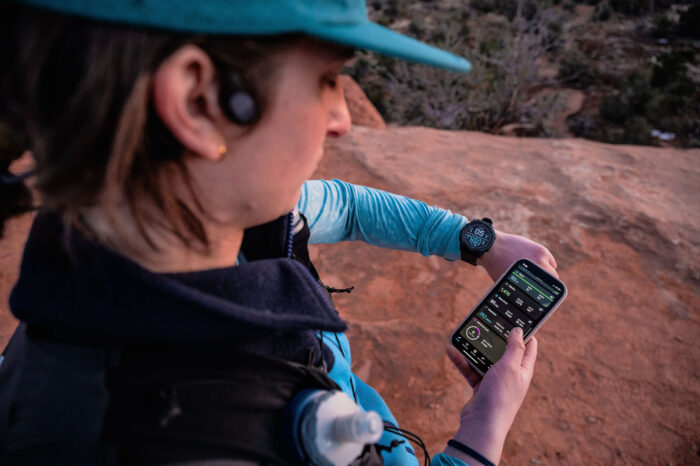
Health tracking is standard across fitness watches, from the most basic fitness tracker to the highest-end GPS watch.
Technology for health tracking has advanced a lot over the past few years, and certain features that used to be considered high-end are now available on just about every fitness watch, like SpO2 (blood oxygen saturation — measured through red and infrared light) and Heart Rate Variability.
Every fitness watch measures heart rate and sleep, while some, like the Whoop Band 4.0, focus intensely on it. Additional health data, such as calories and hydration, are available on most watches we tested, but must be tracked manually.
The Apple Watch provides heart health alerts for low or high heart rates and also allows for medication reminders. All fitness watches provide menstrual cycle tracking, and many have integrated mindfulness into their interfaces, like the Garmin vívoactive 5.
Garmin watches now also track naps, along with overnight sleep. Each brand has its own way of summarizing a night of sleep, but most use a scale of 1-100 to rate the night of sleep while also tracking time asleep and sleep cycles.
Health tracking features are generally standard across brands, but each brand has features that synthesize data in unique ways, like Garmin’s Body Battery and Fitbit’s Daily Readiness.
Garmin’s Body Battery, for example, uses data from sleep, stress, rest, and physical activity to provide a score from 1 to 100 for physical energy. Your Body Battery will be highest upon waking and ebbs throughout the day, depending on activity and stress (measured through heart rate variability).
Some Garmin watches additionally provide insights such as “Easy Day: Your day has been easy so fa,r and you have plenty of energy left for exercise or activity.” Other brands have similar features with different interfaces.
Navigation and Mapping
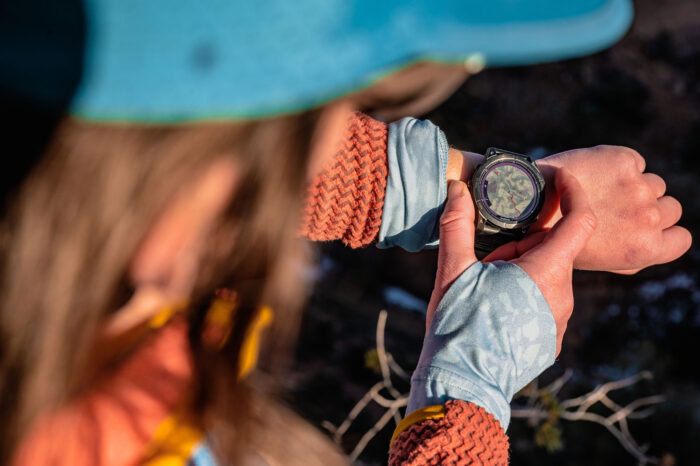
If navigation and mapping are important to you, you’ll have to shell out some cash. You can get some basic navigation features like waypoint markers and tracking integrated into your phone without needing to go for top-of-the-line watches. But if you’re going to be using your watch off-grid and want to upload your own .gpx tracks, you’ll need to go for a higher-end Garmin, COROS, or Polar watch.
Entry-level Garmin watches like the vívoactive 5 that include GPS but lack navigation often feature a back-to-start mode that allows you to use an on-screen compass to return to where you started recording without an on-screen map.
Watches with full GPS navigational capability and onscreen maps, like the fenix 8, Polar Vantage 3, or COROS Apex 2 Pro all allow you to download maps and .gpx tracks for navigation. They all come with basic maps installed, and the ability to add maps is available through each brand’s app or website.
Garmin’s high-end watches like the fenix 8 have a navigational feature called ClimbPro that shows the remaining distance for a section of uphill travel. Garmin watches also include pre-downloaded ski resort maps for 2000 ski resorts worldwide.
Garmin, as well as COROS, includes off-track alerts as well as turn-by-turn directions to a predetermined location.
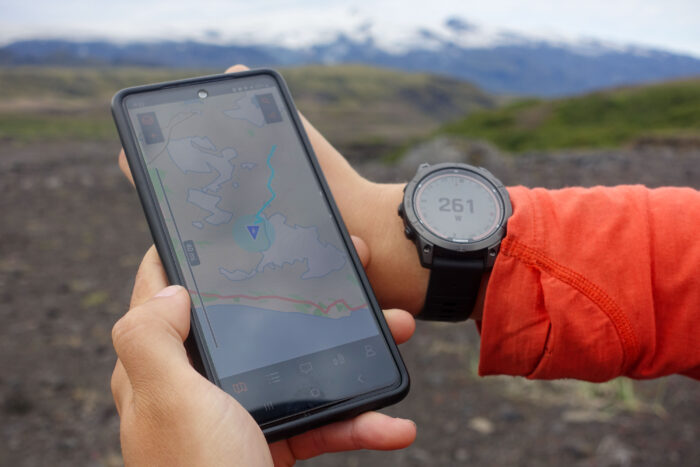
Smartwatch Features
If you want the most smartwatch features, an Apple Watch or similar will be the way to go. But most fitness trackers and GPS watches also include an assortment of smartwatch features.
After Apple and Fitbit, Garmin has the best smartwatch features. Other brands, like Polar and COROS, forgo features like contactless payment for better heart rate tracking and outdoor-focused features.
Pretty much all fitness watches sync with your phone and provide notifications for texts and other alerts — if you want. You can also turn this off if you’re in the camp that seeks fewer distractions.
Many Garmin and COROS watches also feature offline music storage, while lower-end watches have compatibility with music streaming apps like Spotify and have music controls. All Garmin watches now feature Garmin Pay and have the ability to download many third-party apps for various additional features through the Garmin ConnectIQ store. Some watches, like the vívoactive 5, even allow you to respond to Android phone texts through the watch’s onscreen keyboard.
Accuracy and Sensors
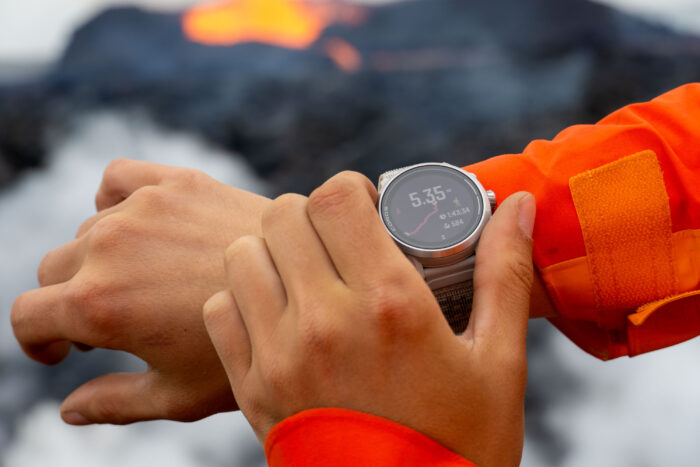
Global Navigation Satellite Systems
Most GPS devices are accurate within 1-3%. In our testing, all GPS-focused brands (Garmin, COROS, Polar, and Suunto) performed equally in GPS connection and accuracy. Connection time varied from 10 seconds to a couple of minutes, while distance was within the 1-3% margin.
It’s important to remember that location has a lot to do with GPS connection and accuracy. Accuracy depends on multiple satellites communicating with each other freely and reporting back to the watch.
Distractions such as buildings, trees, cliffs, and clouds can affect the satellites’ ability to pinpoint the watch sensor. We suggest asking fellow athletes in the area where you’ll be working out to find out how their watch’s GPS performs.

GPS isn’t the only game in town when it comes to satellite navigation systems, and many new fitness watches are integrating other global systems to increase fidelity in their location technologies.
GLONASS is a Russian satellite navigation system that provides global positioning data in the same way that the GPS system does, and can provide more definition in high latitudes. Galileo is operated by the European Union and also offers full global coverage.
The BeiDou Satellite Navigation System is operated by China, and while originally only providing coverage to eastern Asia, it went global in 2020. And finally, QZSS, a Japanese system, provides coverage over the Asia-Oceania regions.
Because different satellite systems have undergone multiple generations of satellites, each operates on a different frequency than the last. These older satellites are still functional and provide more data that leads to a much higher fidelity signal when combined with one another. This is multi-band GNSS (Global Navigation Satellite System) technology, and more and more fitness watches today are incorporating it into their builds.
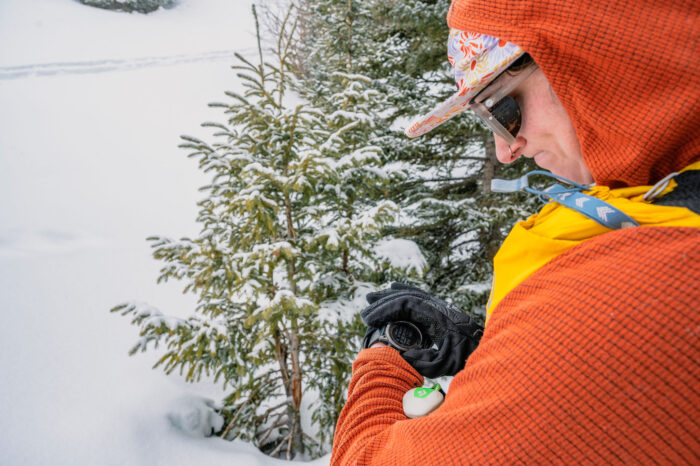
Barometric Altimeter and Compass
Most outdoor-focused fitness watches now come with barometric altimeters and compasses that support their navigational capabilities. This is where the older term ‘ABC’ watch comes from.
Barometric altimeters measure elevation through air pressure. They can also predict incoming storms and weather patterns.
Polar and Garmin both have options to set their watches to one of three settings: Automatic, Barometer, and Altimeter. ‘Barometer’ locks the watch in a mode where all changes in pressure will be considered due to weather and changes in ambient pressure, while ‘Altimeter’ considers all changes in pressure to be due to elevation change. Automatic determines the best mode for your current activity.
Pretty much all fitness watches that include GPS, even without full navigational capabilities, include a compass. This allows for back-to-start navigation and basic orientation without service.
Heart Rate Monitors and Pulse Oximeters

Monitoring heart rate is one of the most basic features of any fitness watch or tracker, and pulse oximeters have become standard over the past few years. These two sensors allow users to monitor training strain and overall health.
Each brand of watch uses a slightly different technology to analyze and interpret heart rate data, but they all use similar ways of measuring optical heart rate, known as photoplethysmography (PPG). A green light shines from the back of the watch, through your skin, and reflects off of red blood cells in your veins, measuring blood flow.
Pulse oximeters measure blood oxygen content, which is most useful at high elevations to determine adjustment to altitude and performance ability. Fitness watches use red and infrared light to estimate the percentage of oxygen in your blood. While useful, especially for altitude training, watch pulse oximeters are not as reliable as fingertip pulse oximeters.
Battery Life
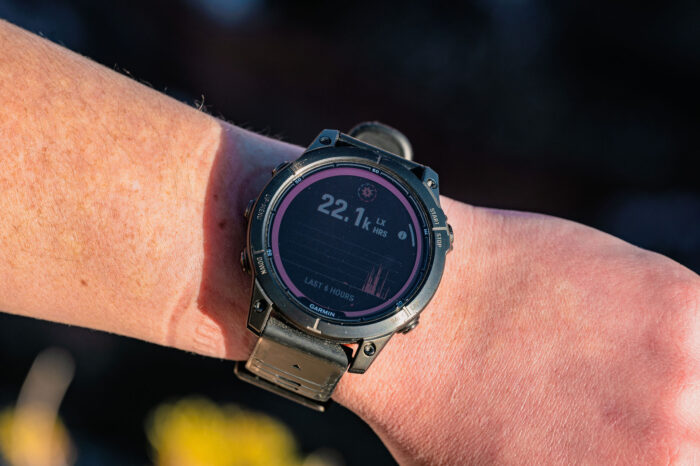
This is the most notable difference between smartwatches and GPS watches. On average, smartwatches need to be recharged every 24 to 48 hours, whereas GPS watches can last 5 to 20 days between charges.
These times are ever-increasing, thanks to the integration of solar charging on some of the more premium models. Solar charging, like with the Garmin fenix 8 or Enduro 3 uses a Power Sapphire lens to convert sunlight into power, extending the charge of your watch, depending on sun exposure.
Many factors influence how long your watch’s battery will last, including what you’re using it for. If you’re using GPS tracking (and single GPS versus multi-GNSS mode matters), your battery will die faster. Most watches advertise battery life with and without GPS.
For example, the COROS Apex 2 Pro advertises 75 hours in GPS mode (GPS + QZSS) and 45 hours with five satellite systems (GPS, GLONASS, Galileo, Beidou, QZSS), and 30 days for daily use without GPS tracking.
Charging time is relatively quick, with most offering a full charge in around 2 hours. If you’re like us and hate having to constantly charge yet another device, we recommend a GPS watch with a longer battery life.
Design
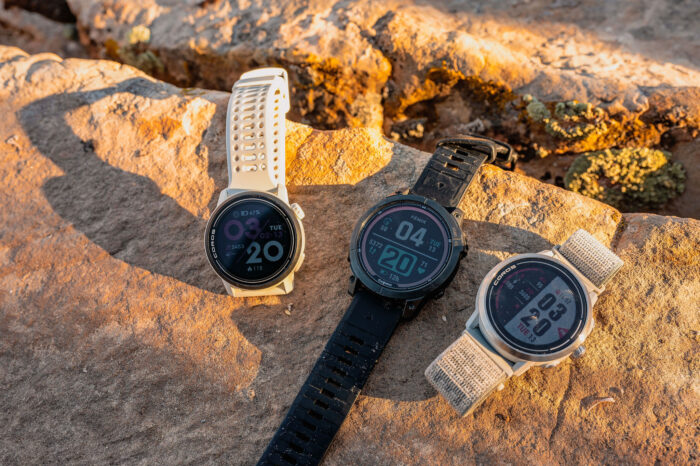
Size
Outdoor and multisport watches are often larger and heavier because of the sheer number of features (and extended battery life), so much so that they can look too big and awkward on small wrists. If you prefer a smaller size, most brands (including Garmin, COROS, and Polar) offer smaller versions of flagship models.
Buttons and Dials
The physical design of watches varies across brands, with some using a two-, four-, or five-button layout, others using a dial and buttons, and others using no buttons at all.
Garmin tends to have two-, four-, or five- buttons on its watches. Its lower-end watches tend to have fewer plastic buttons, and premium watches feature more metal buttons. Each button can be programmed as hotkeys (press and hold) to access various screens such as music controls, settings, timer, alarm, and more. In our testing, we found that the Garmin buttons feel intuitive, but the left-side buttons can be hard to reach.
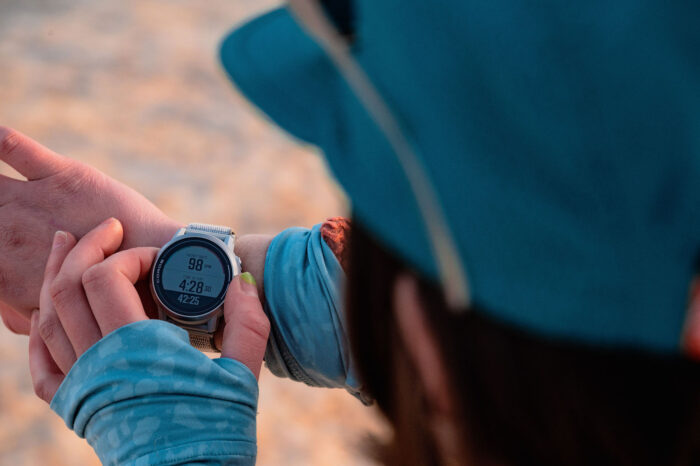
Polar uses a similar layout of buttons to Garmin, but we found the material used for its buttons to feel less satisfying and reliable when in use.
COROS and Apple use a combination of buttons and dials. The dial is useful for looking through lists at a glance, while buttons help make choices and find more in-depth information.
Most watches have ways to lock the button use, which can be convenient when you don’t want your watch to change screens. Fitbit, however, has mostly eliminated buttons and uses haptic sensors on one side of the Fitbit Charge 6. Testing found this to be much less reliable compared to buttons on other watches, but it does provide a simple design.
Displays and Touchscreens
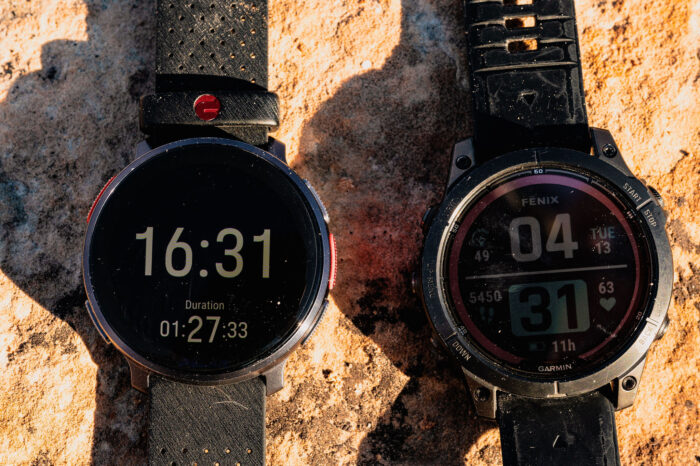
Nowadays, most fitness watches feature touch screens, although some are still button-only. The type of screen depends on the watch and the brand.
There are two types of displays found on fitness watches — AMOLED (Active Matrix Organic Light Emitting Diodes) and MIP (Memory in Pixel). AMOLED displays are brighter and perform better in low light, but are not always great under direct sunlight. These are your smartwatch screens that look more like a smartphone. They also use up battery quickly when always on, so they usually are ‘lift’ or ‘tap’ to wake.
MIP screens look duller at first glance, with colors showing up differently than on your phone. They use reflective LCD technology that depends on ambient light for visibility. This allows them to be always on and show up brighter in bright sunlight. They use less power than an AMOLED display.
Outdoor-focused watches typically feature an MIP screen since this is the battery-friendly option and allows for better visibility outside, while smartwatches tend to have AMOLED displays. Some watches are even offered in both styles, such as the Garmin fenix 8.
The actual material used for a screen also matters, especially if you’re going to be using it for high-impact activities, or just tend to beat up your belongings. Sapphire glass is one material used by Garmin, Apple, and other watch brands that is incredibly crack and scratch-resistant. Another common material for fitness watch screens is mineral glass, which is cheaper but scratches more easily.
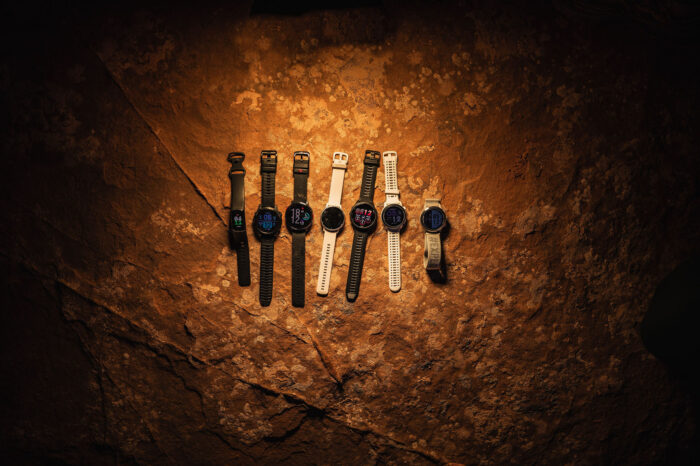
Watch Bands
Most fitness watches come with silicone watch bands that are easy to swap out. Depending on the type of watch, alternative watch bands can be found through the manufacturer or, depending on the type of watch, through third-party sites. You can choose between various textile, rubber, or even leather watch bands.
Silicone is the best for active use, although some designs do need to be cleaned and dried often to avoid the build-up of sweat and grime. Textiles or leather can look nicer.
User Experience, Ecosystem, and Apps
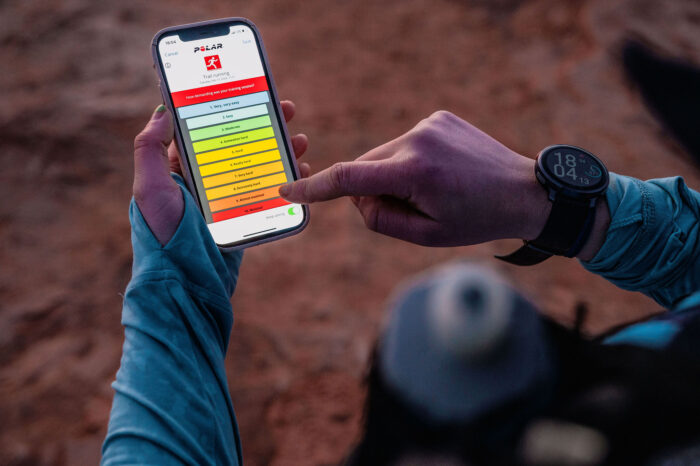
Perhaps as important as the fitness watch itself is the depth and strength of its ecosystem. An ecosystem is composed of the watch’s application, web portal, and supported third-party apps such as Strava and Spotify. To view your data, you’ll need to download an app on your phone.
As Garmin is the largest fitness watch company, it has the broadest and strongest sport-specific ecosystem. Garmin’s app and web portal, called Garmin Connect, displays just about all the performance and health metrics you need. Polar’s Flow app and web portal follow close behind Garmin, with COROS and Suunto following Polar. Amazfit’s Zepp app is a bit of an outlier, though it shows function and promise.
Price & Value
Price can give you a good measuring stick of the features of a watch, and there’s a pretty wide range when it comes to fitness watches, especially among different styles. Fitness trackers tend to be the cheapest, with smartwatches asking a bit more and GPS watches commanding the most.
Budget
The universe of fitness watches is a big place, but that doesn’t mean you have to drop a grand to get some solid fitness tracking ability. This is the realm of fitness trackers and light-duty smartwatches, as well as some budget-minded GPS watches that trim some of the extra functionality to hit a more approachable price. Expect these devices to track everyday metrics such as heart rate, calorie burn estimates, sleep data, and a number of different activities.
Entry-level fitness watches tend to cost between $150 and $300 and will typically track in GPS mode for between 20 to 40 hours. The COROS Pace 3 ($229) is at the top of the heap and leverages an energy-sipping MIP screen to do it. The Garmin vívoactive 5 ($300) won’t track for as long, but the sharp AMOLED screen is far better for folks using the watch indoors as much as outdoors.
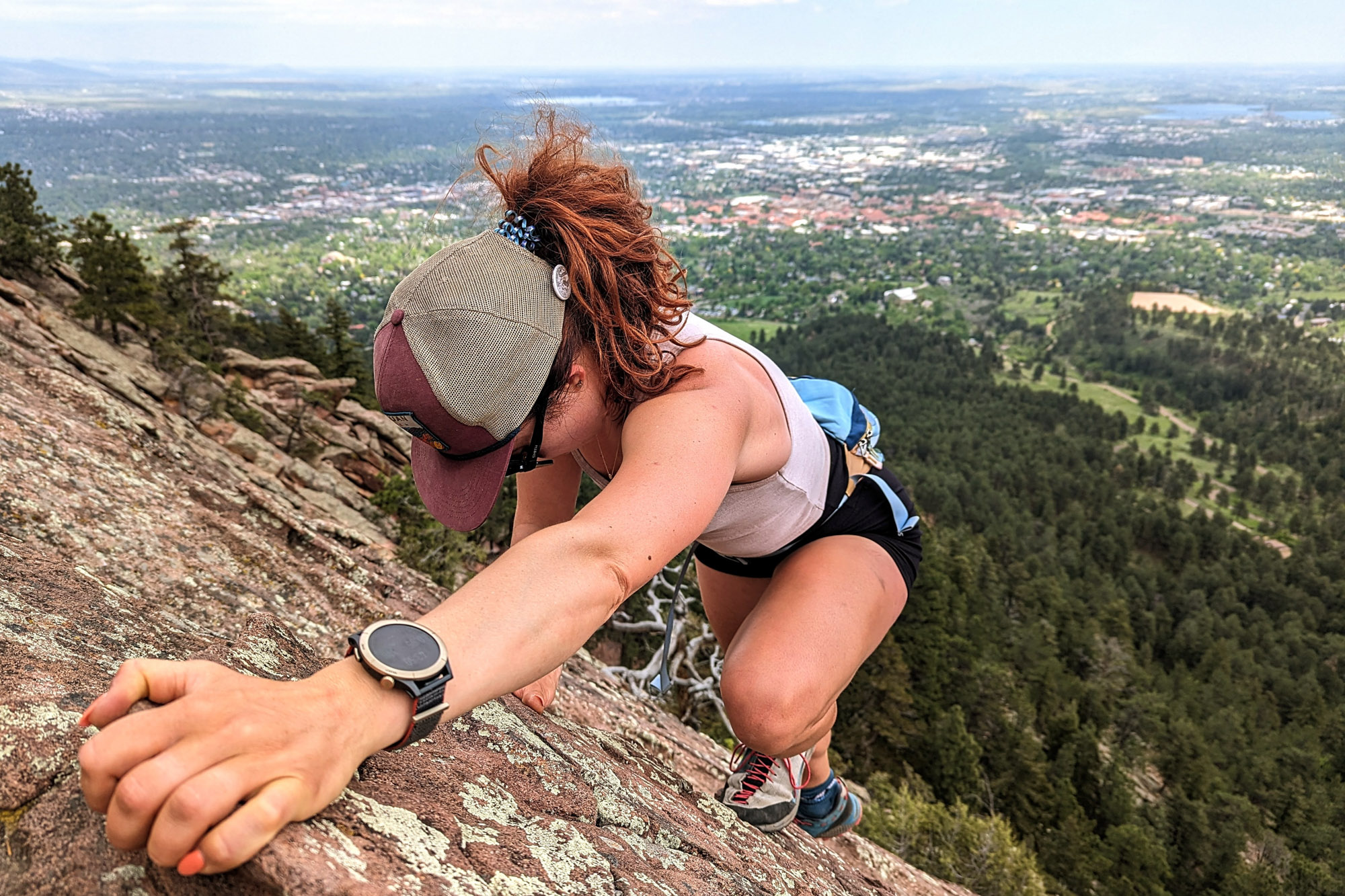
Mid-Tier
If you’re an active person interested in more detailed fitness metrics such as your VO2 max and activity intensities, a mid-tier watch is likely the way to go. These watches tend to cost between $400 and $600 and will open up a great deal of training ability, as they often incorporate adaptive training programs that synthesize your tracking data and use it to inform your progress.
Spending a bit more opens up more software power and greater hardware. Heart rate sensors will have multiple LEDs to obtain a more accurate reading, and satellite chips will tap into a greater number of global satellite networks and sometimes additional satellite bands as well.
The COROS Apex 2 Pro ($449) is our favorite mid-tier watch at the moment, as it piles on the functionality with a built-in barometer, altimeter and compass, on-watch navigation, and some mapping features.
Premium
If you’re an ultra-racer who needs extended battery life for into-the-night endeavors or a multi-sport athlete who needs extended specialized functionalities like depth alarms for diving or heart rate variability, then spending the dough to get a one-and-done watch can make a lot of sense. These watches often have larger bezels to accommodate bigger batteries, and with them, GPS-tracking times between 60 and 90 hours. Solar screens are also available, helping to keep your watch topped off.
The Garmin fenix 8 ($1,100) is near the top of the price range, but for good reason — it’s got nearly anything you could want. Flagship watches like this sport the most activities tracked (80+), receive dual-band GNSS data, and have user-programmable buttons and touchscreens. The Apple Watch Ultra ($799) is certainly premium when it comes to smartwatches, and the Garmin Enduro 3 ($899) boasts huge battery life numbers.
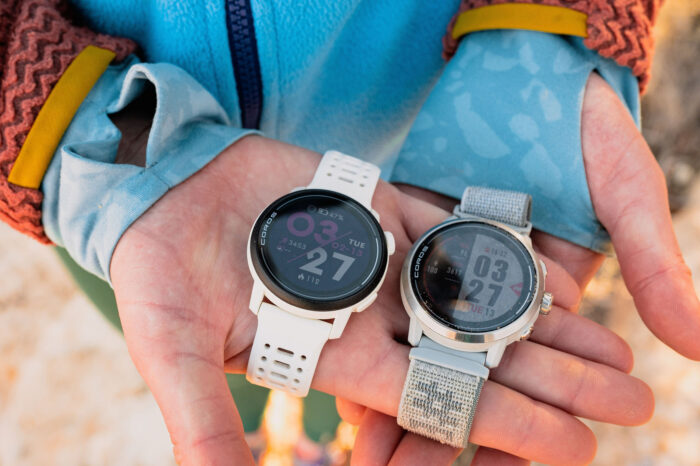
Frequently Asked Questions
A fitness tracker’s primary purpose is tracking health data such as heart rate, sleep, steps, and calories. It uses sensors in the band or watch to monitor. Most fitness trackers need to be connected to your smartphone to access the data.
If you have an iPhone, we would recommend the Apple Watch Ultra. It’s the bestselling smartwatch, and everyone we spoke with absolutely loves it. If you don’t have an iPhone, the Apple Watch will not work.
Fitbit is a great choice, but with Google’s recent acquisition in limbo, the future of Fitbit as we know it today is in question.
This is a tough question to answer. It depends on what features you’re talking about. In general, we found Apple watches to have the best health tracking, Garmin to have the best GPS tracking, and Polar to have the most accurate heart-rate monitor.

The Best Running Shoes for Women
Whether training for a marathon or logging a few easy miles in the neighborhood, we found the best running shoes for women in 2020.

The Best Running Shoes for Men
We’ve logged hundreds of miles in the latest shoes this spring to help you find the best running shoes. These kicks fit every style and budget.

